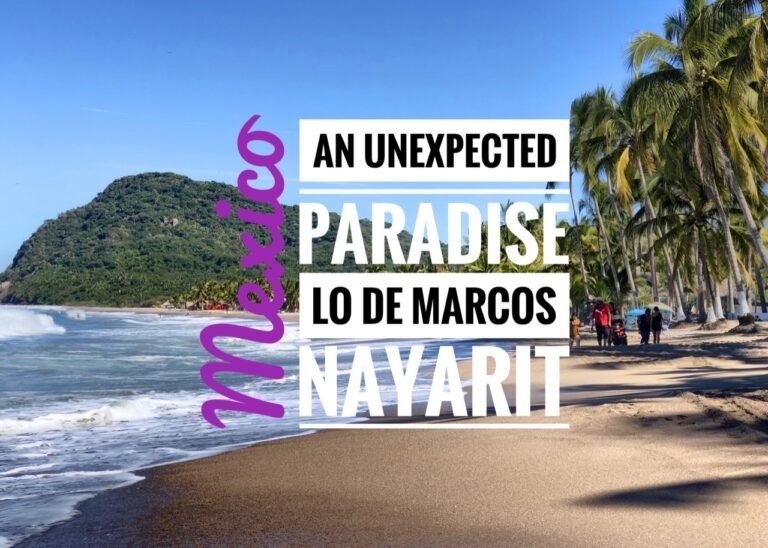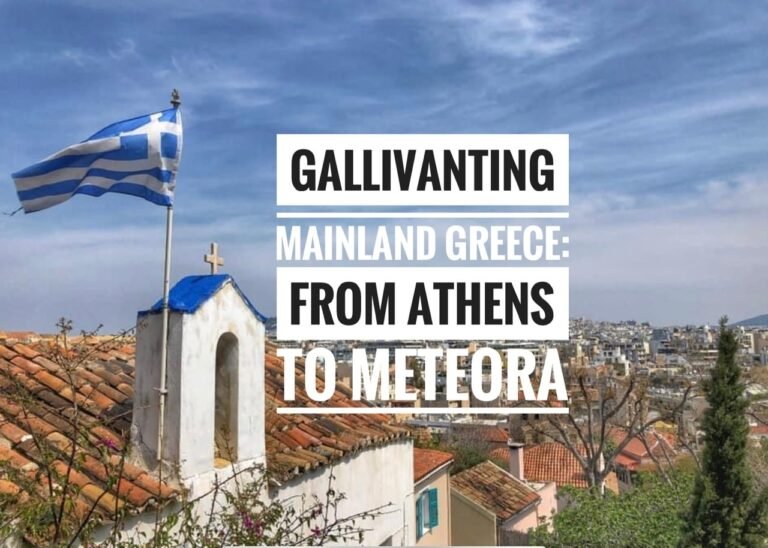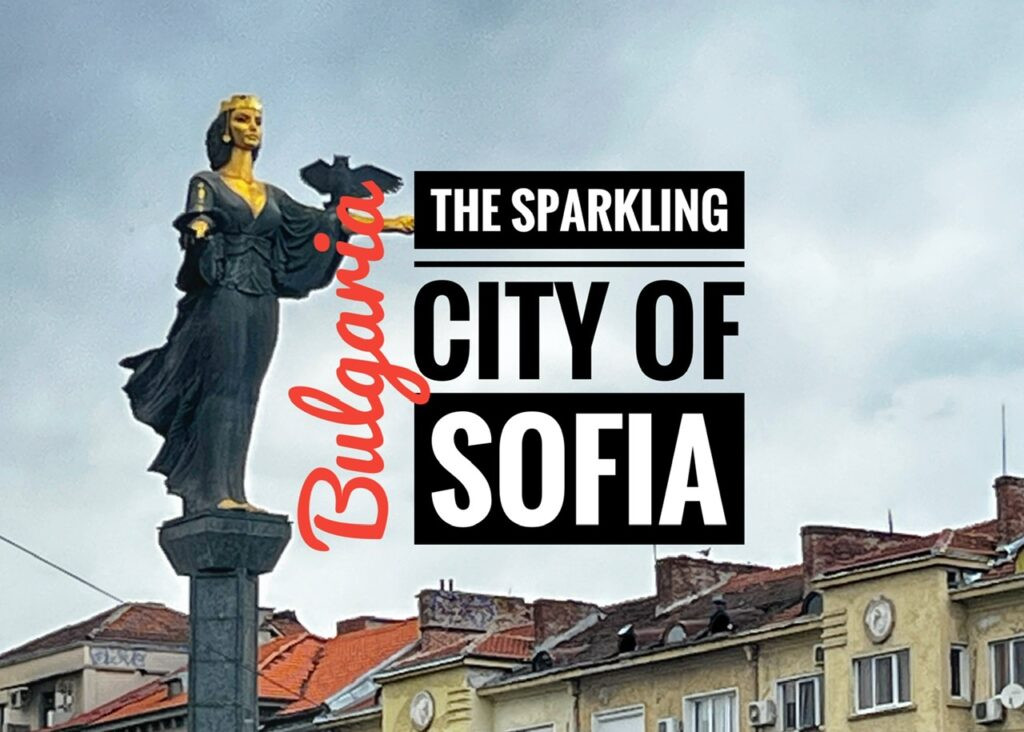
Returning to Bulgaria Once Again
After four back-to-back Anglophone countries, we were feeling quite content to dive back into something a little more foreign. However, heading to Bulgaria this time wouldn’t be quite as unfamiliar as it was upon our first visit in 2018. In fact, returning to this country we adore immensely almost felt a bit like returning home, especially now that we had a bit more Bulgarian under our belts. It couldn’t come at a better time either because after two months of intensely fast travel in Australia and New Zealand, and an industrious time in the States, we are more than ready to shift gears drastically for some hyperlocal, and slow travel.
Our 8-hour journey on Ryan Air was doused with a luminous blast of springtime sun all the way from Northern England, across the Alps to layover in Milan, and above the Adriatic Sea. We also had the opportunity to check out the lounges in Manchester and Milan before finding ourselves in Bulgaria’s beautiful capital of Sofia just before sunset.
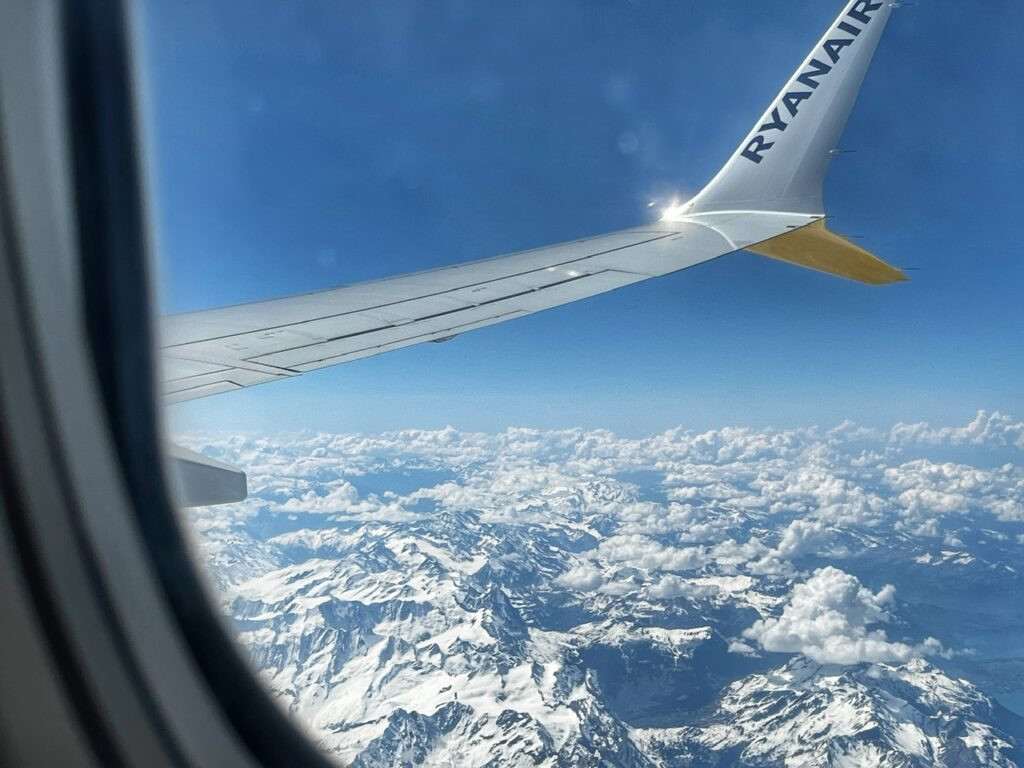
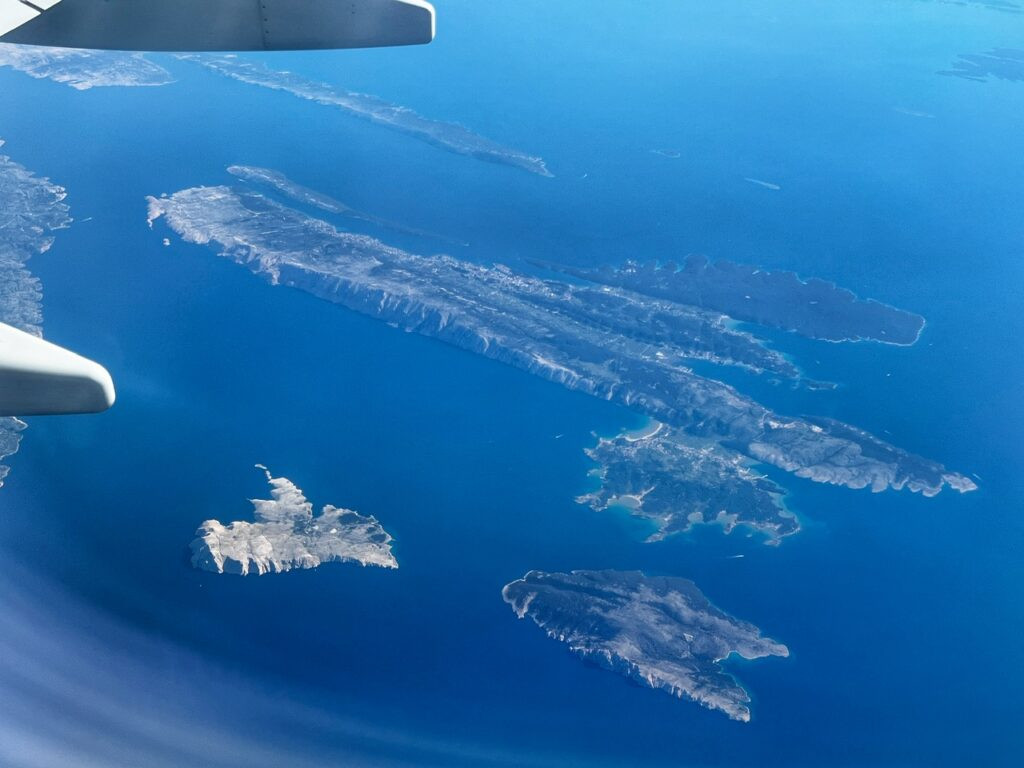
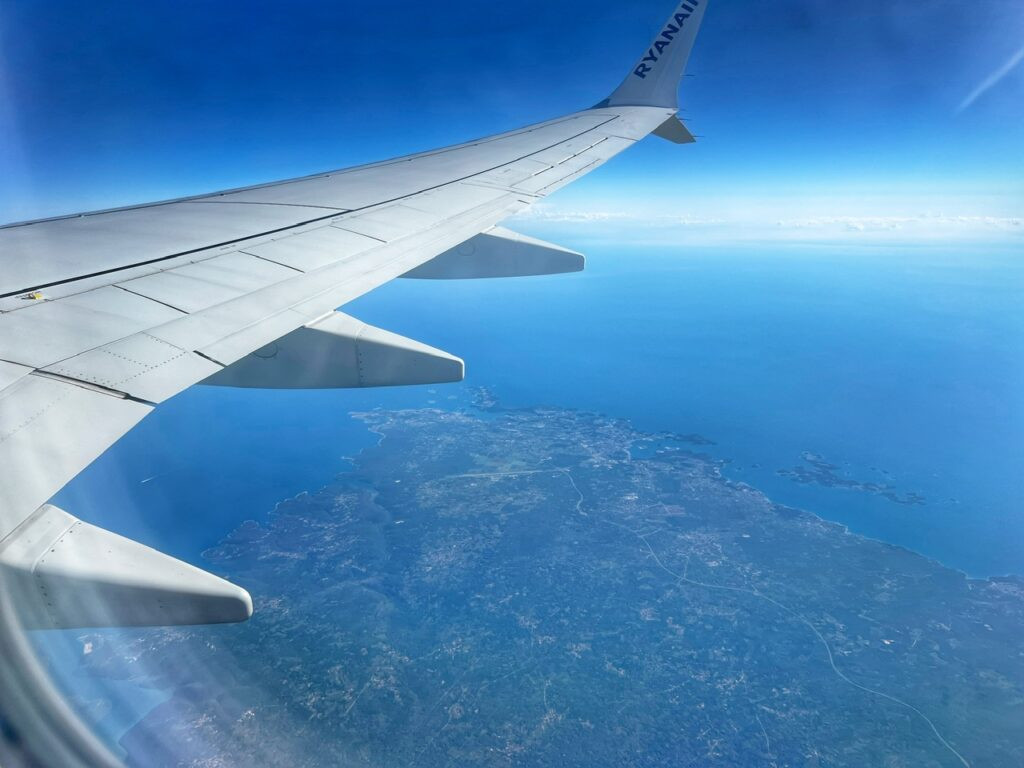
The snow-capped Alps blanketed the terrain below during our first Ryan Air flight from Manchester to Milan. Both flights were free using about $278 in Capital One points to pay ourselves back.
On our second leg, a clump of the Croatian islands shimmered below. We could see the Istrian Peninsula in its entirety, which is a jagged arrowhead chunk of Croatia that juts out into the Adriatic.

Back at the Manchester lounge, we loaded up on our last official British brekkie, including creamy yogurt with all the toppings, and foamy coffee delights.
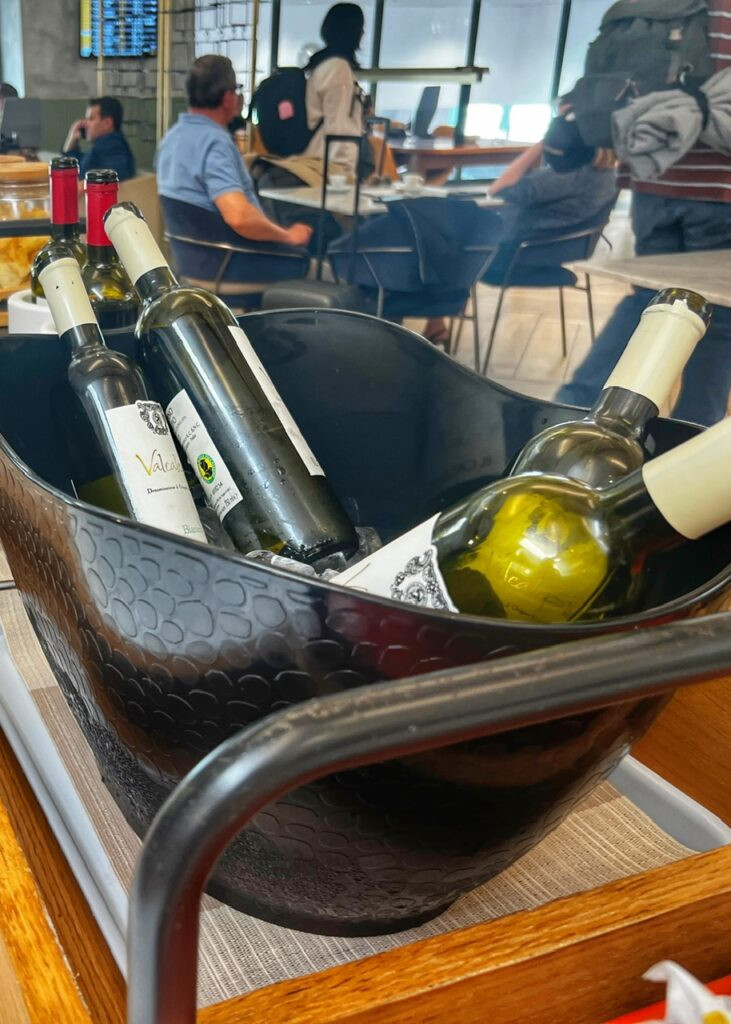
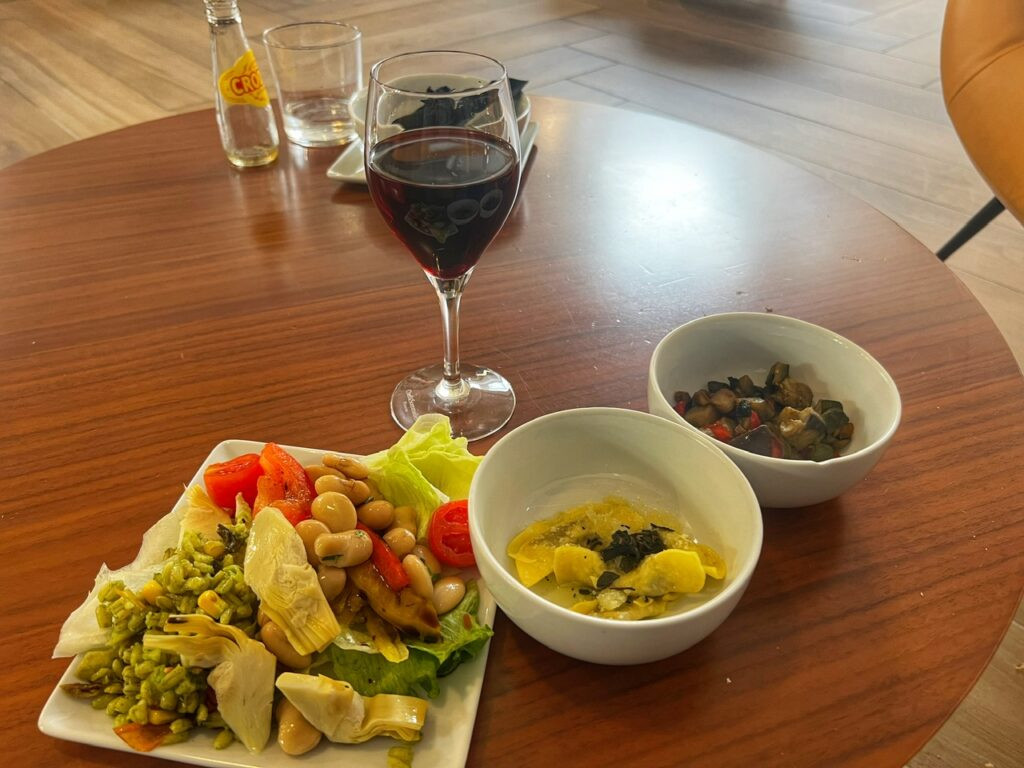
Thankfully by the time we arrived in Milan, it was wine o’clock. But then again, isn’t it always wine ‘o clock in Italy?! Clearly, because they just leave a pile of bottles out in the lounge for anyone to swig down. Our Italian smorgasbord.
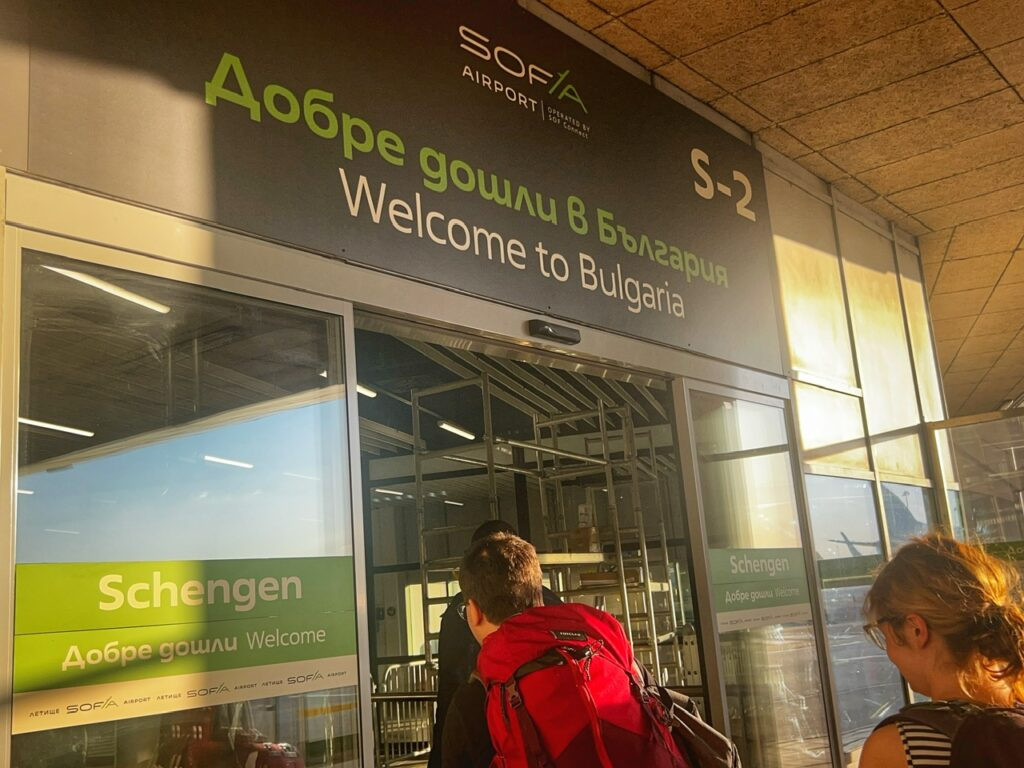
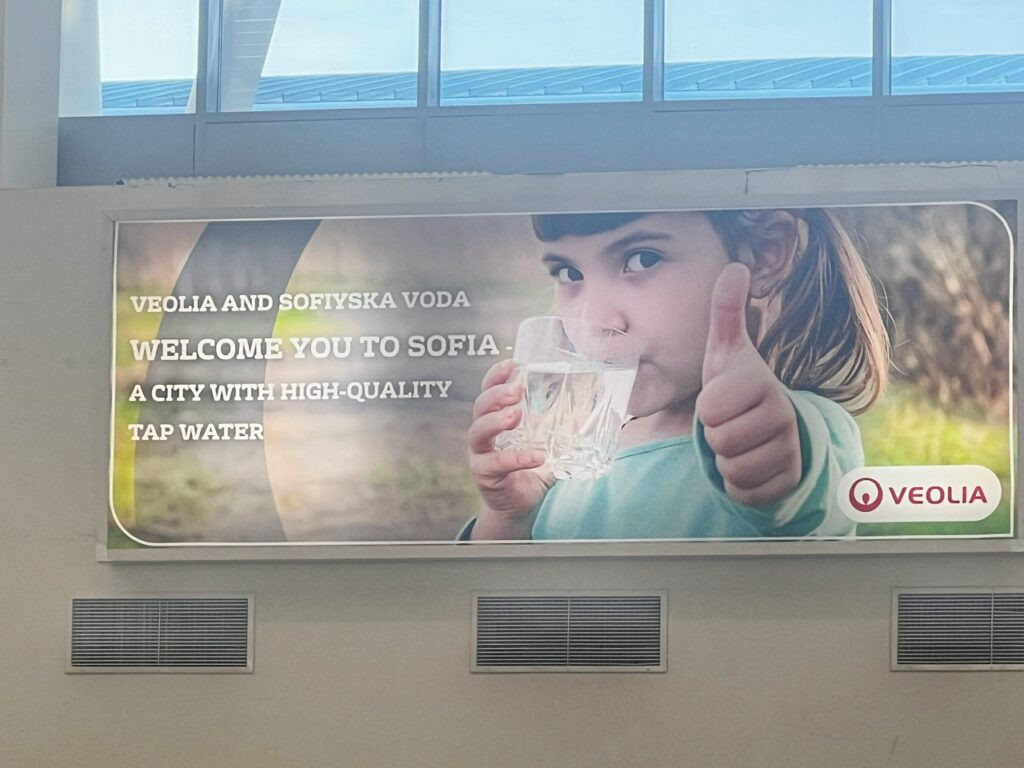
Dobre Doshli to Bulgaria!! After sliding down the Ryan Air back stairs, teetering on the airport shuttle bus, and corraling into the now Schengen entrance, we immediately became confused by a few of the Cyrillic letters, which were being used in a different way than the ones we’ve learned. Dang it. After further digging on Chat GPT, we’ve learned this is in fact, just the use of modern fonts to confuse us more.
As we scooped some Leva out of the ATM, we admired the signage about Sofia’s drinking water. Ahh….after two years of having to think about this in Southeast Asia and Latin America, this was a blissfully welcome reminder.
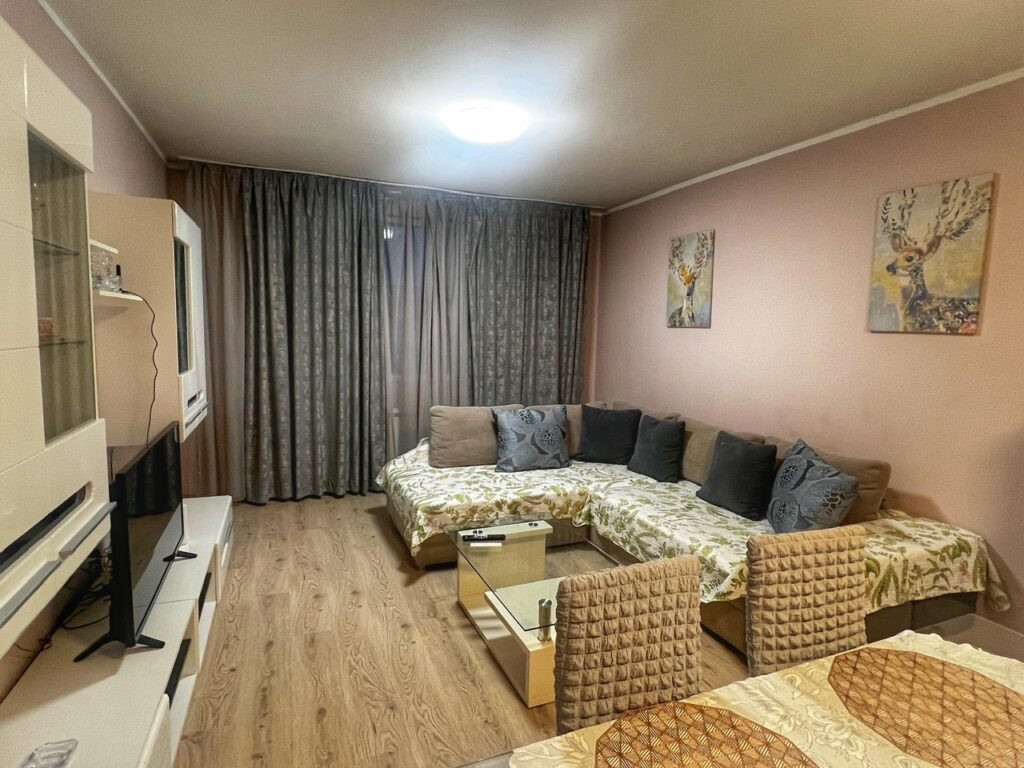
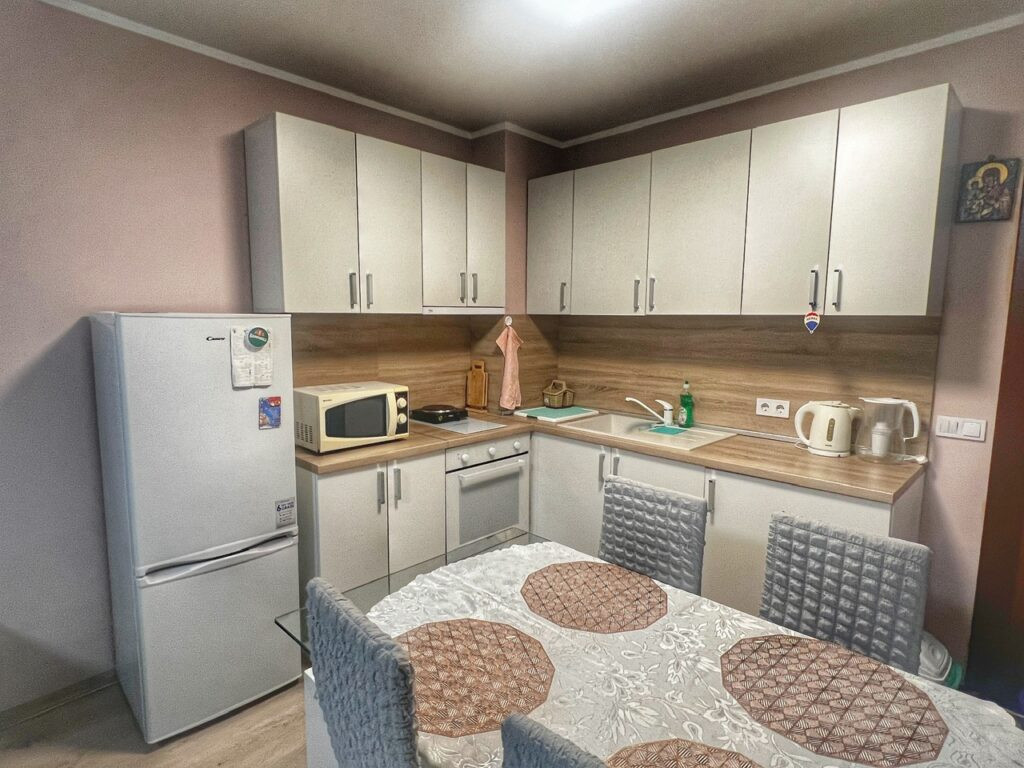
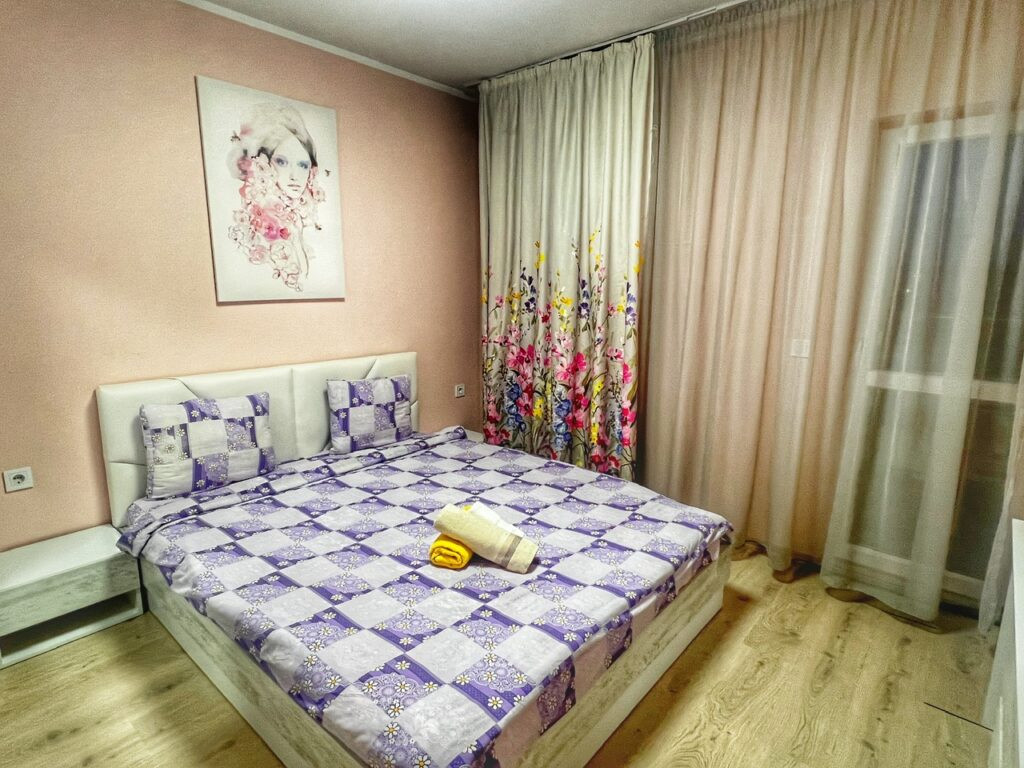
Arriving to what Booking deemed a “luxury” apartment in the Obelya neighbourhood of Sofia, we were rewarded with a giant sofa bigger than all the sitting places we’ve had combined in the last year. Luxury indeed. For $31/night, it also had a washing machine, and a full kitchen, which includes some curious instruments we’ve never seen in any other rental apartment kitchen….a garlic press and a rolling pin, as well as a fully stocked spice cabinet. Too bad we wouldn’t get to roll out some dough; it was planned to be a quick visit here before we really settled into the country.
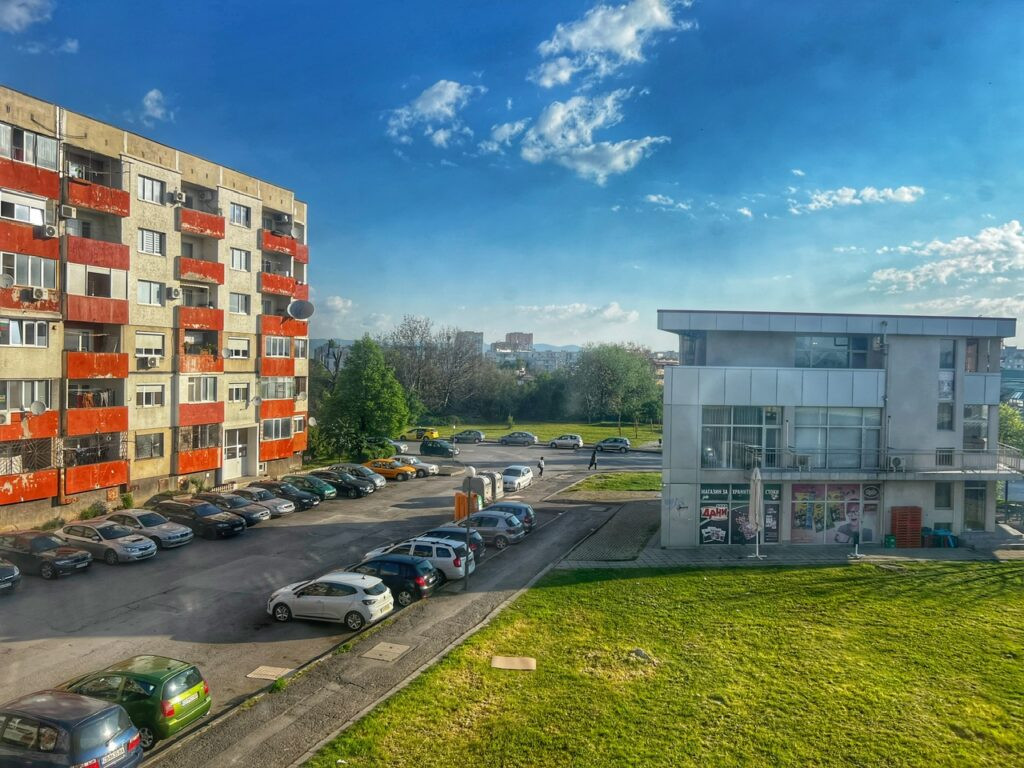
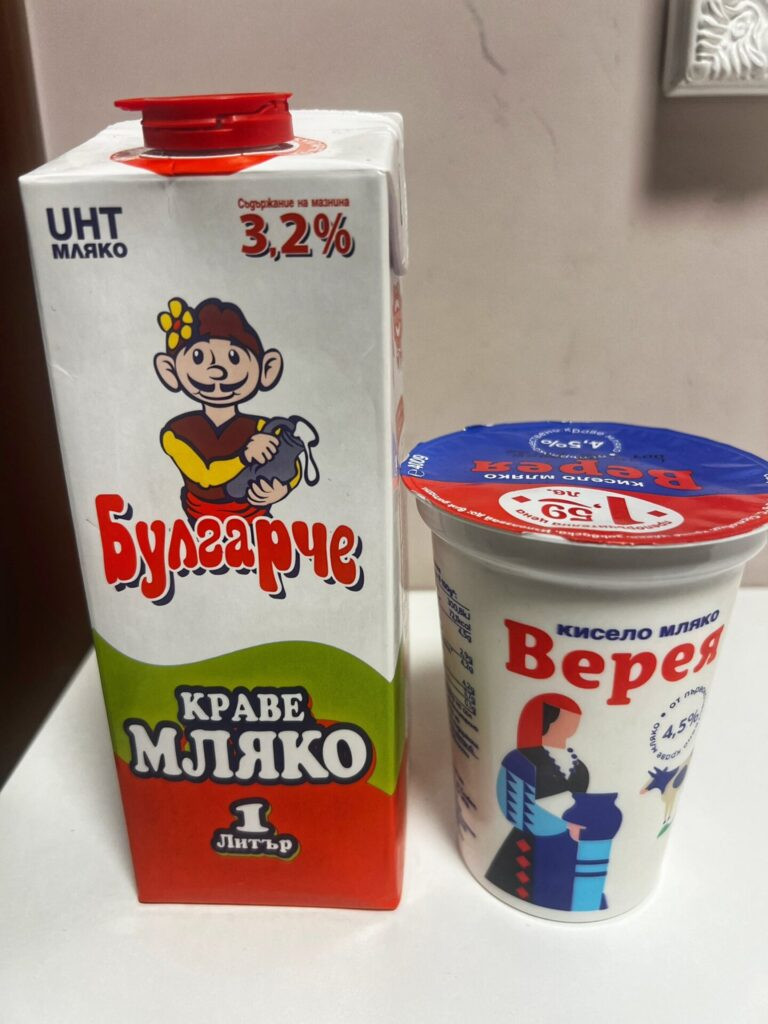
The morning view from our window. Yes, it was in a refurbished panelak…next to a less refurbished one. This is the Czech word we know for the obtrusive communist-style residential buildings. We have yet to learn the Bulgarian equivalent….
That said, we survived the first corner market run by reading and buying the correct products…milk and yogurt. We’ve really screwed up yogurt in the past so it’s a step 🤣
The Obelya Neighborhood of Sofia
For the next four days, we hadsettled into Sofia’s neighborhood of Obelya, which felt like a much more realistic portrayal of Bulgarian city life than the charming, and put-together centre. Our $31/night apartment was on the third floor of a refurbished panelka (communist-style residential building), next to an endless row of shabbier leftovers. We are located an incredibly convenient three-minute walk to the metro station, which drops you in the center in 15 minutes for about $.93 a ride.
It’s a place where the birds are chirping every morning, and the nights are eerily quiet for being in a city. And although we see plenty of locals walking, they all seem to be doing so with purpose, as they saunter toward the metro station, most not making eye contact or offering a greeting.
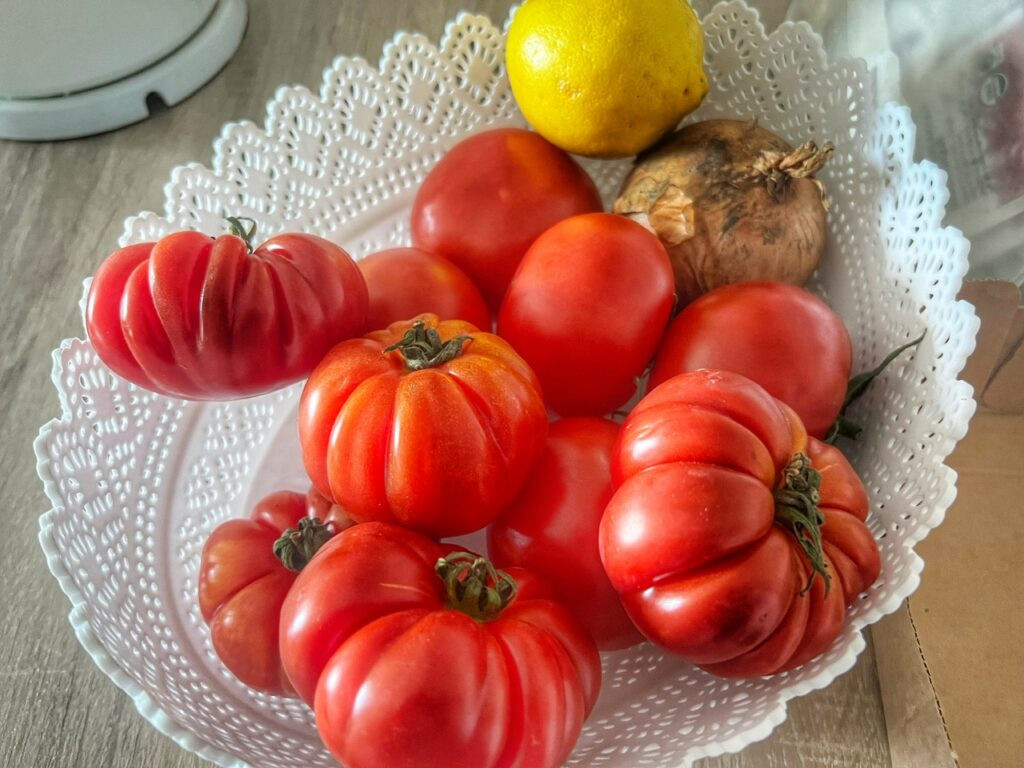
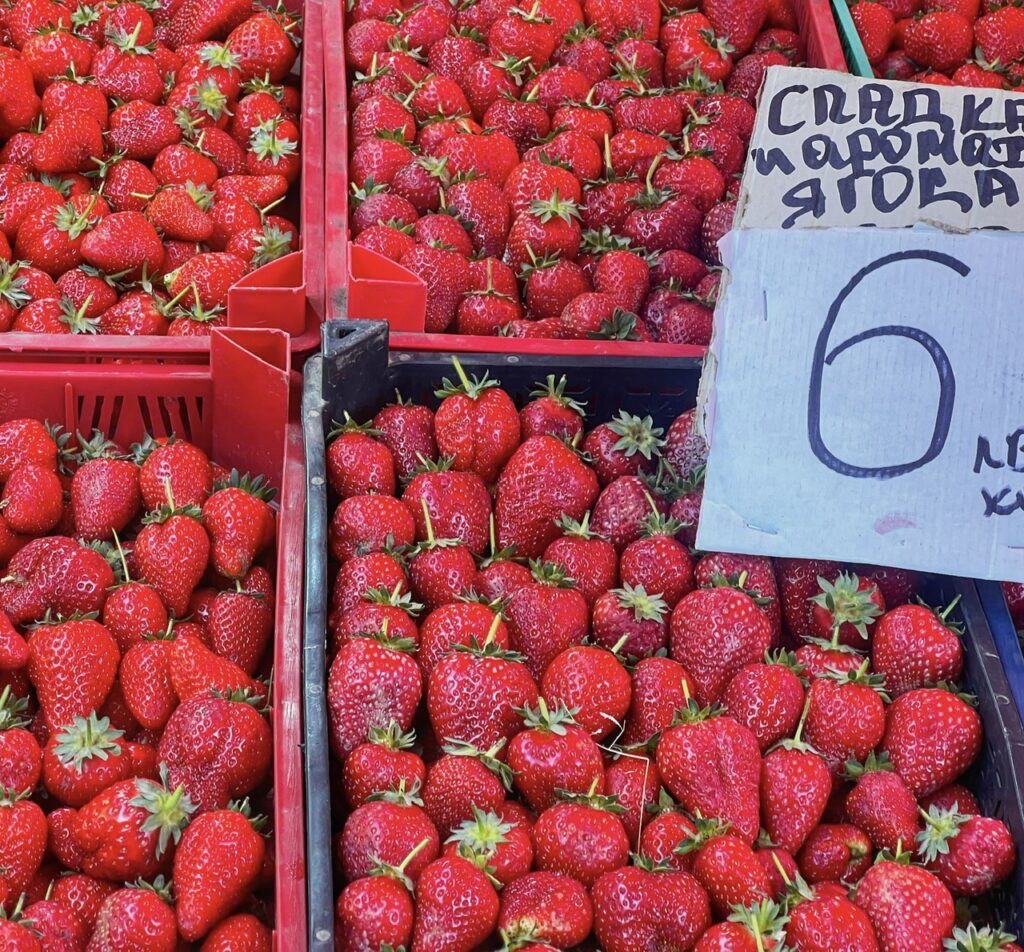
Our favorite element so far was the fact that it was tomato and strawberry season. Thus, we immediately started gorging on the fruit, which practically tastes like candy; not at all like the insipid fruits we’d briefly grown accustomed to in the States. It’s also been nice to freely wander in the nearby neighborhoods, which were simple and clean, though somewhat ramshackled, with joggable streets and dotted with colorful playgrounds. That said, ’twas city life, and we’d definitely be ready to move on for a one month stay further south….
There were at least 12 different kinds of tomatoes at the local market. We randomly selected three options and the ones resembling mini heirlooms were by far the most succulent. They cost about $1.75 for 9 of them, which is probably still a foreigner price. The glistening candied strawberries for $3.50 a kilo (about 2 pounds)
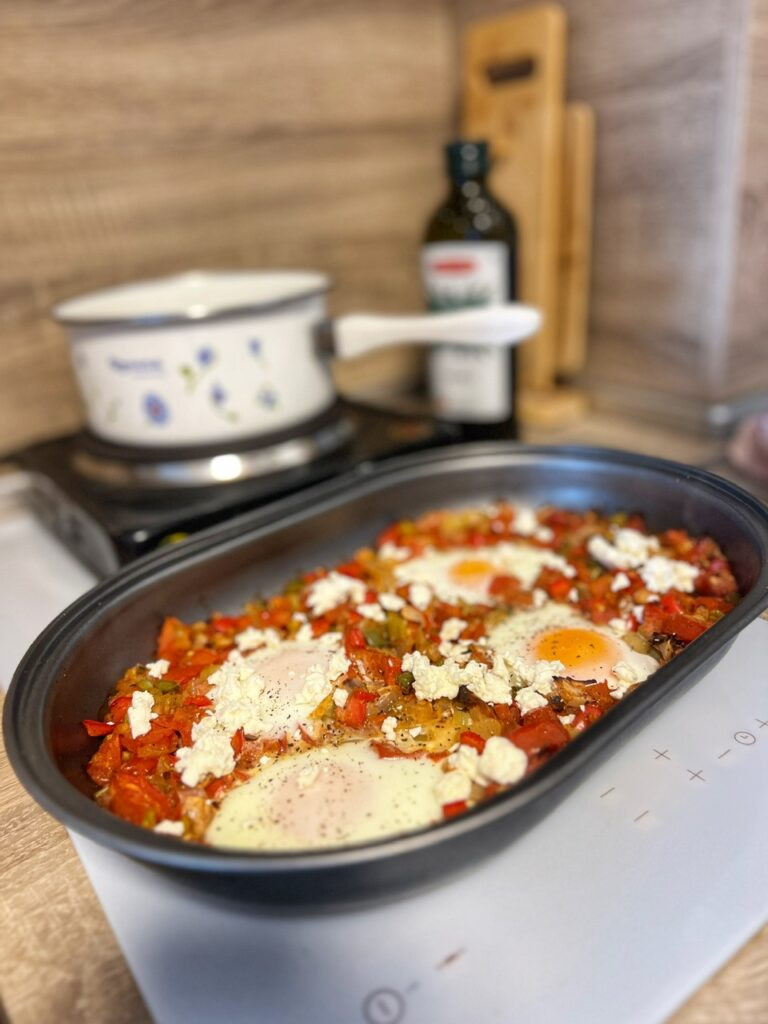
Our first creation with those Domati (tomatoes) is oven-baked Shakshuka. Yes, we had an oven. It’s an Airbnb miracle!!!
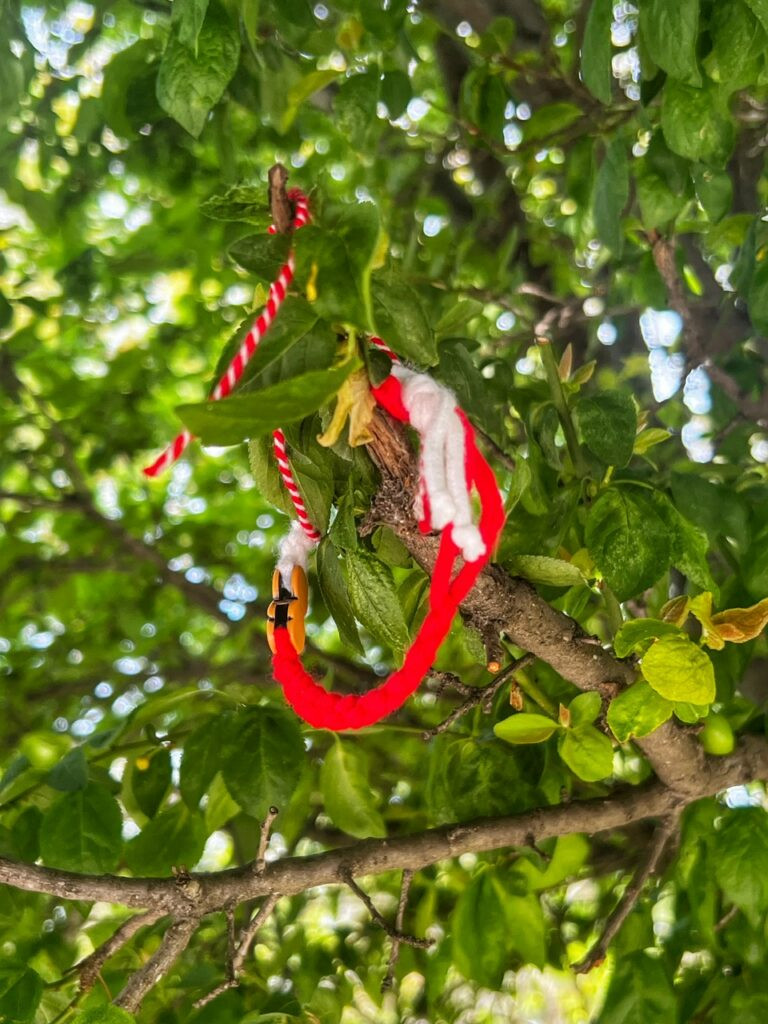
Ironically, at the time we arrived, several people had “alerted” us that Bulgaria was featured on this season of the US TV show, Amazing Race. If you’ve seen it, you’ll know that the teams had to search endlessly for a red and white bracelet in a haystack. In reality, you’re more likely to see the Martenitsa bracelet in trees, which is deeply rooted in Bulgarian folklore and tradition. It’s seen even more this time of year because it’s the symbol of spring and renewal and celebrates “Baba Marta Day” which literally means Grandmother March, a mythical figure who brings the end of winter and beginning of spring.
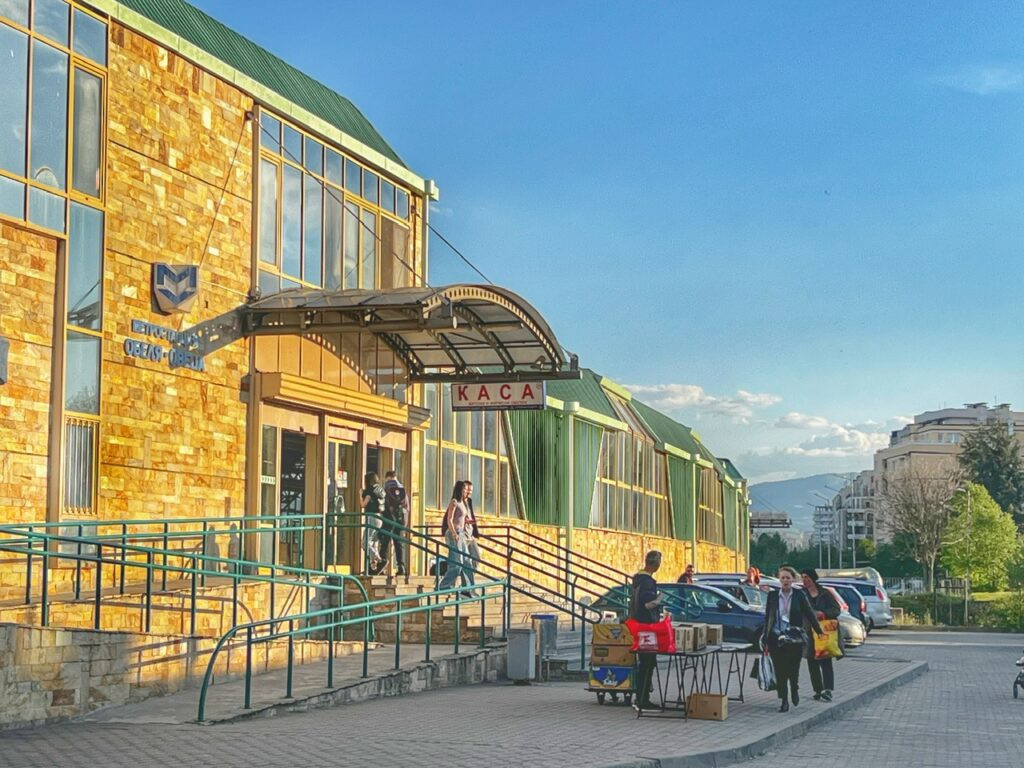
The entrance to Obelya metro station was footsteps away and still has a bit of Soviet flair. The metro in the 1.2 million people city Sofia has four integrated lines and is incredibly easy to use. You currently have to buy tickets with cash or coins from the machines, which are then validated on the stiles upon entry. However, there are signs that they’re advancing quickly as there is an option for digital wallet payments already built on the stiles, which hopefully will be engaged soon.
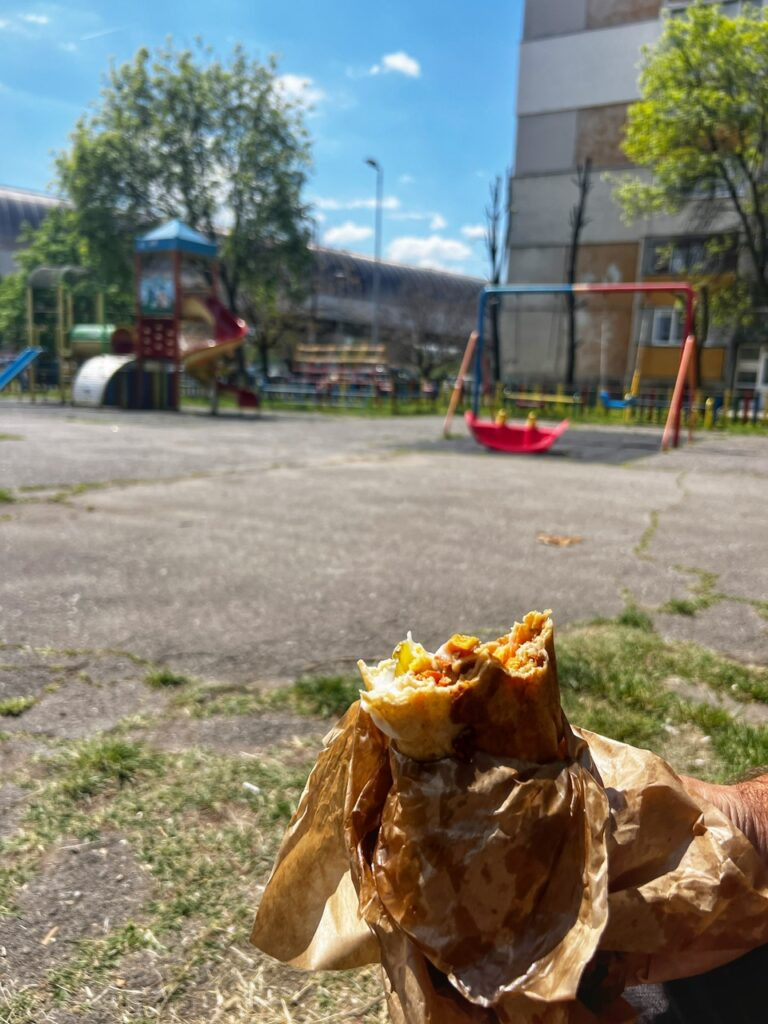
Our first official lunch in Obelya was a doner, which Mandy tried (and failed) to order in Bulgarian. Good thing they smiled and immediately switched to English. This seems to be the norm…at least in the city. Today, Bulgarians all begin learning English in first grade, so it’s quite prevalent.
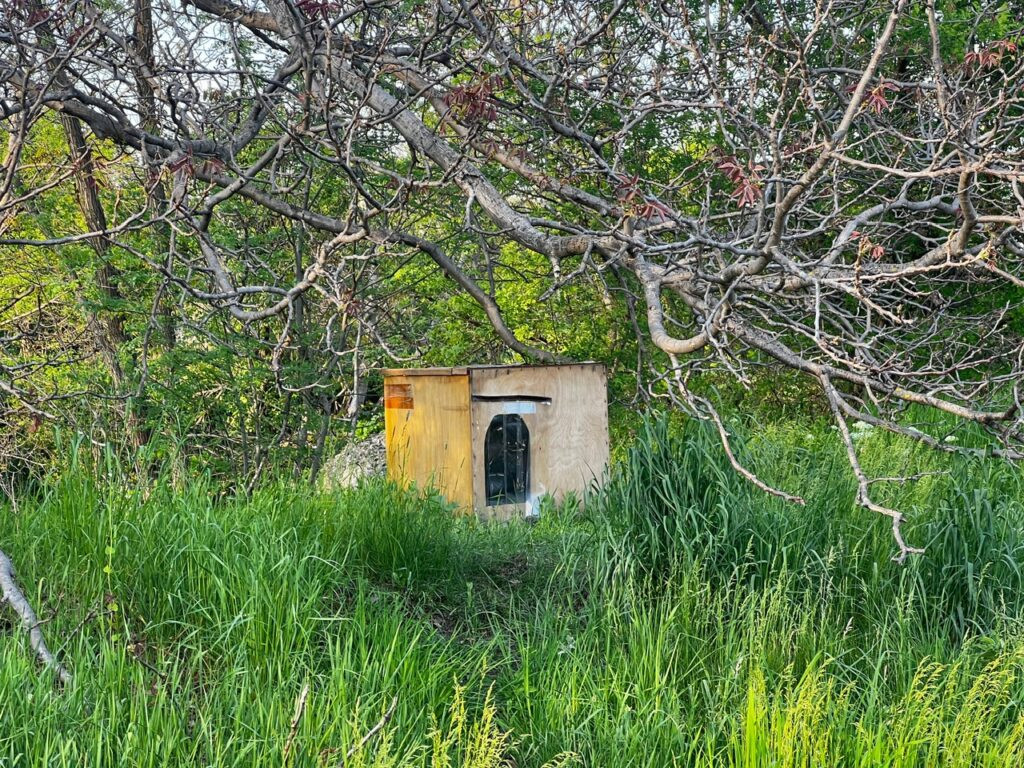
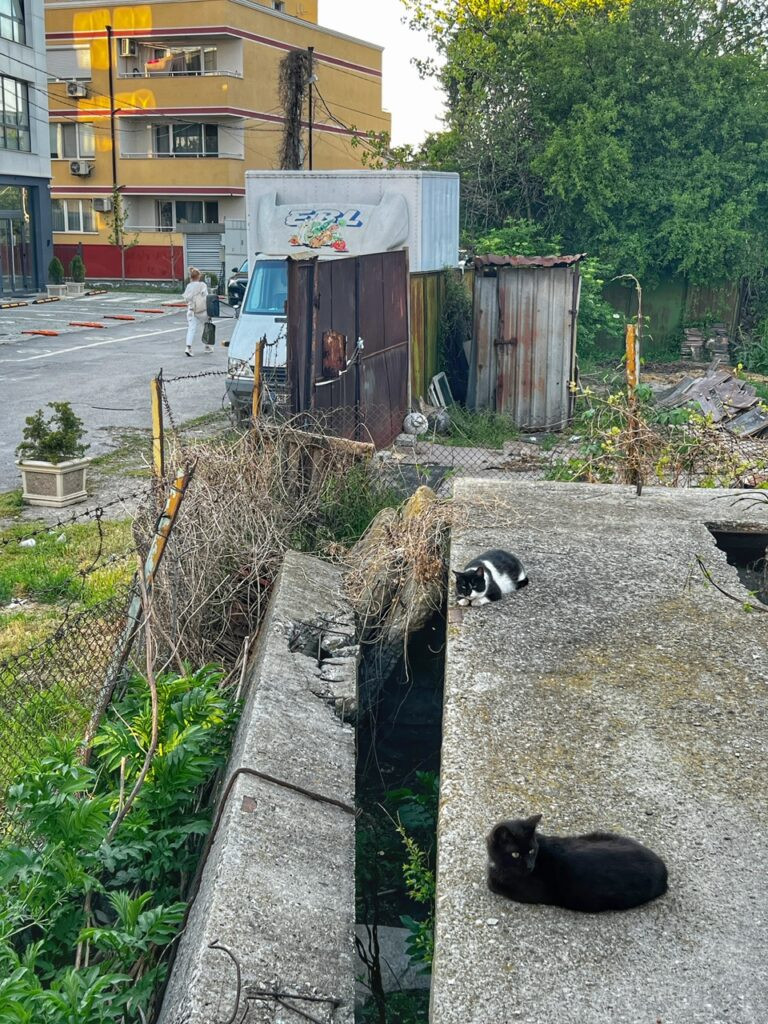
Bulgarians, like the Turks and other nationalities in the Balkan area, are very friendly to street animals. It’s very common to find shelters for them sprinkled throughout neighborhoods. Our first street cat gang was about 7 members wide.
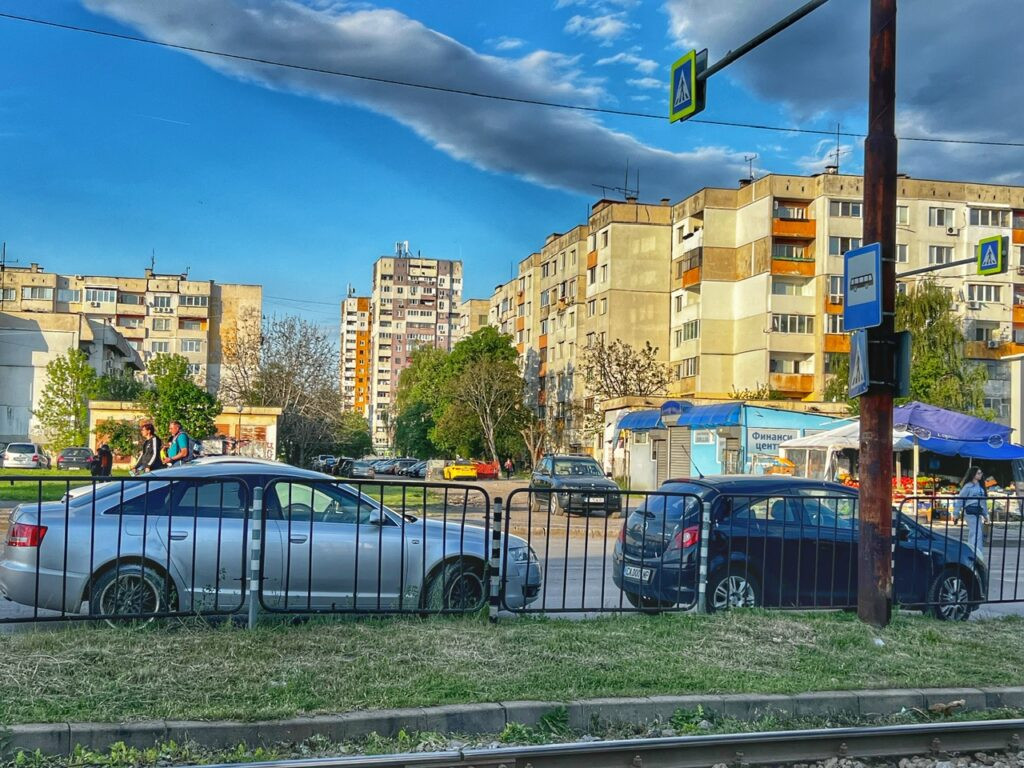
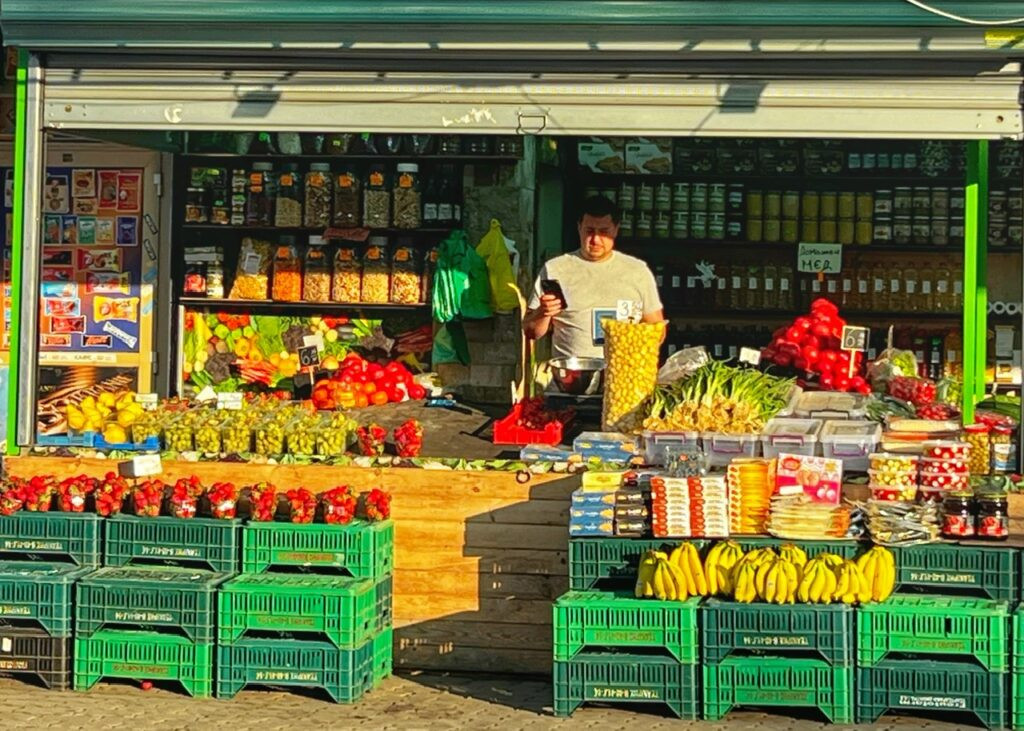
The rows of panelkas that line the streets of the neighborhood, as well as an abundance of neighborhood market stalls
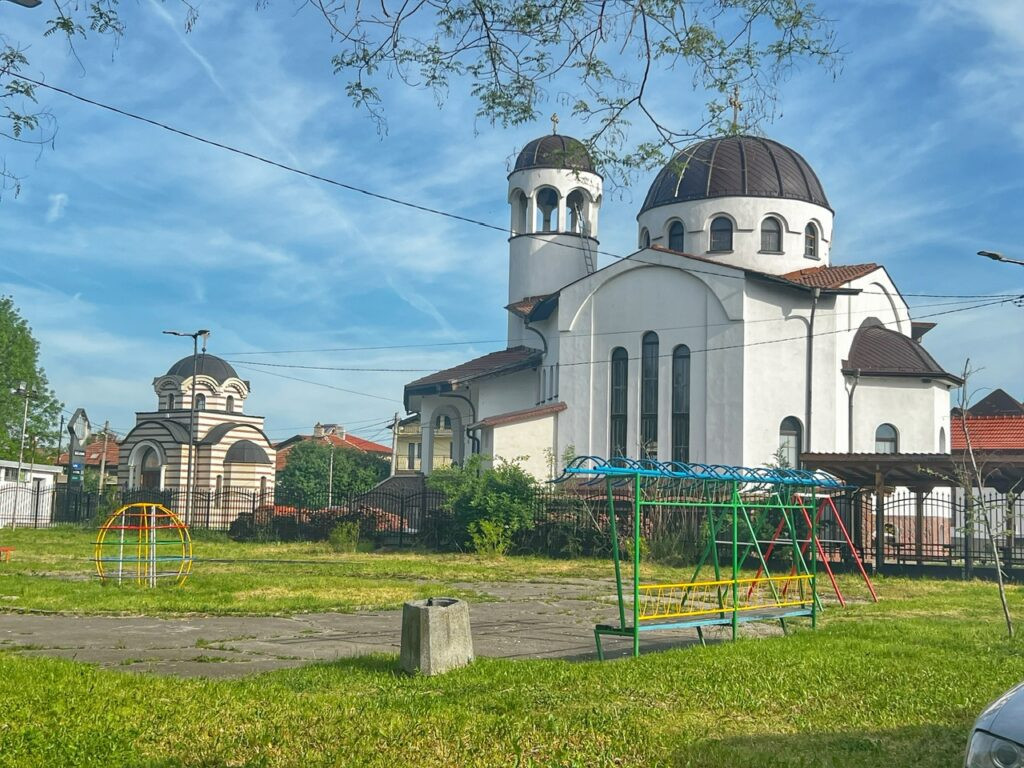
A neighborhood church we would see on our regular morning runs.
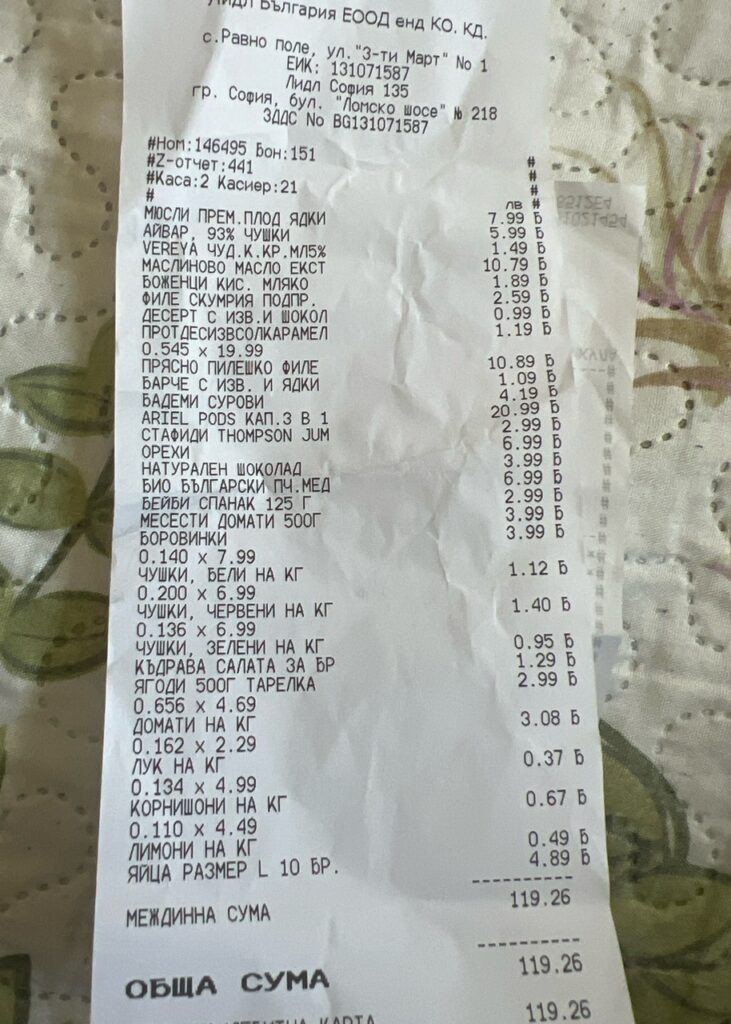
Our first grocery bill, from Lidl, the always a terrific value German supermarket, was $69.
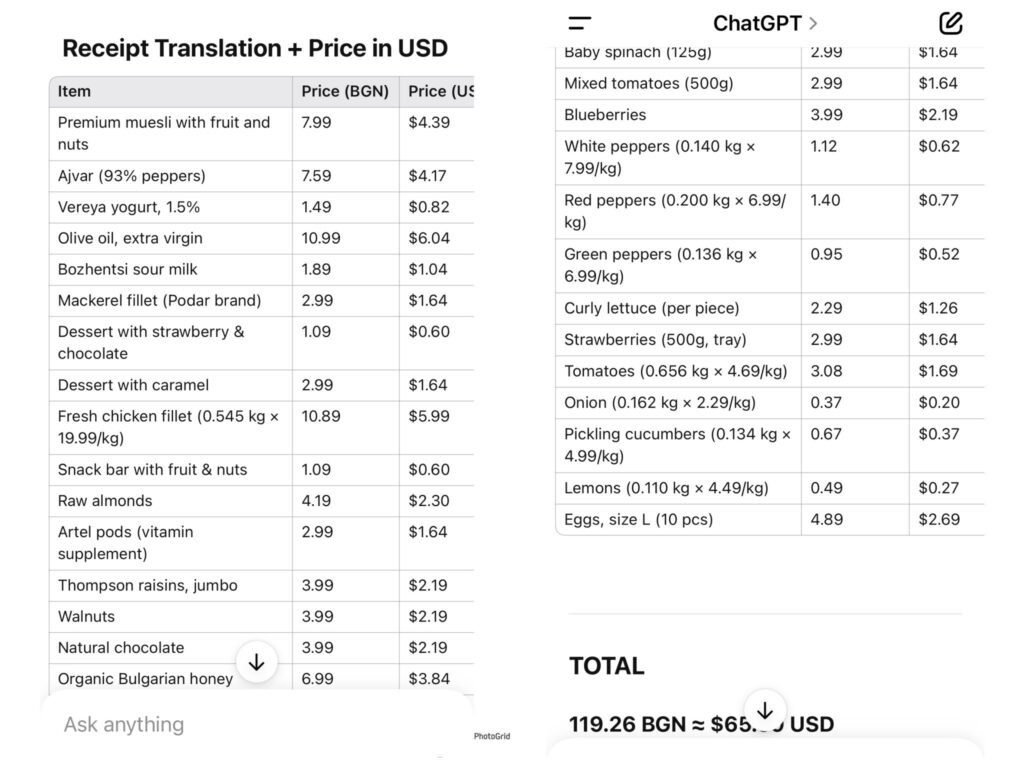
When we dropped it into Chat GPT, you can see the breakdown of the items, with notable differences in affordability on the dairy products and produce. And the best part is the high quality of these items, which is one of the huge draws to this country overall. However, we would soon learn that groceries in Bulgaria were actually pretty overpriced….
Re-Exploring Sofia
This was not our first time in Bulgaria’s bustling capital of Sofia, but it was the first time during lovely weather and this definitely enhanced her sparkle. Also, we use the word “bustling” loosely because Bulgaria isn’t an exactly a land that does this, although the capital perhaps more than anywhere else. Sofia, which was once called Serdica, is a fascinating city on its own merit as one of the oldest cities in Europe, dating from the Neolithic times a mere 7000 years ago. It also played a pivotal role in 1st Century Roman Empire so, like other parts of this region, it is sprinkled with Roman ruins and history at every footstep.
For us, it served as a great reintroduction to the language and lifestyle, a convenient meet up with long lost priyateli (friends), and a place to grab our six month dental check ups…the first ever at a holistic dentist.
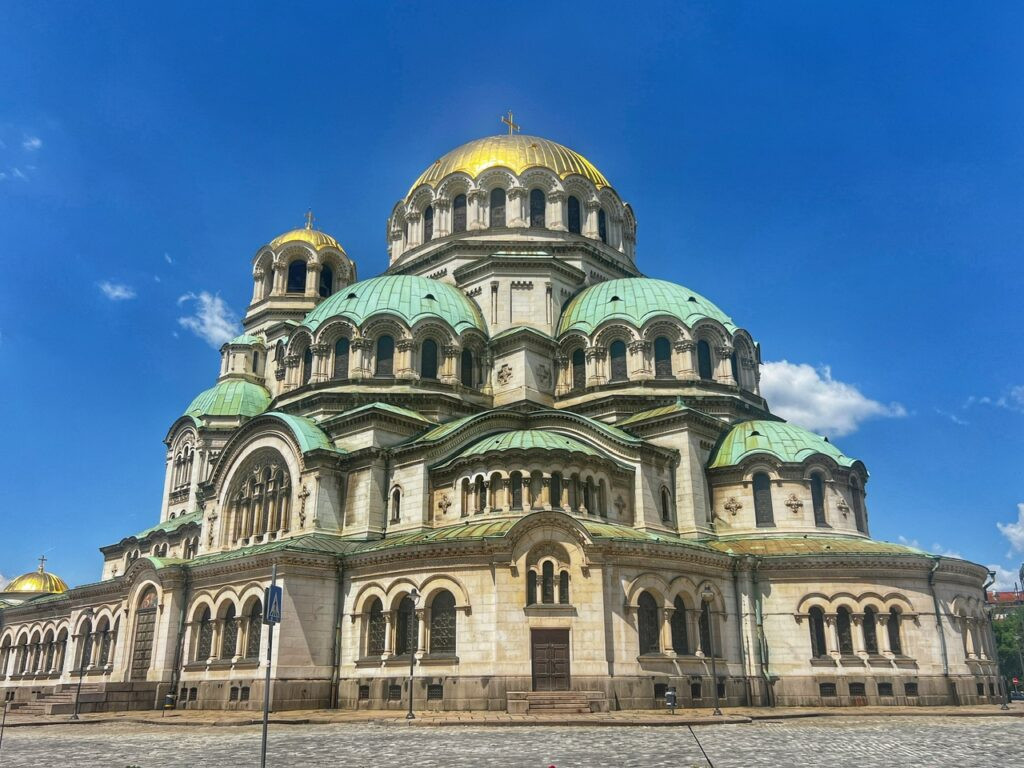
The pearl of Sofia is the majestic St. Alexander Nevski Cathedral, which was designed by the Russian architect Alexander Pomerantsev between 1904 and 1912. It supposedly holds up to 10,000 worshippers.
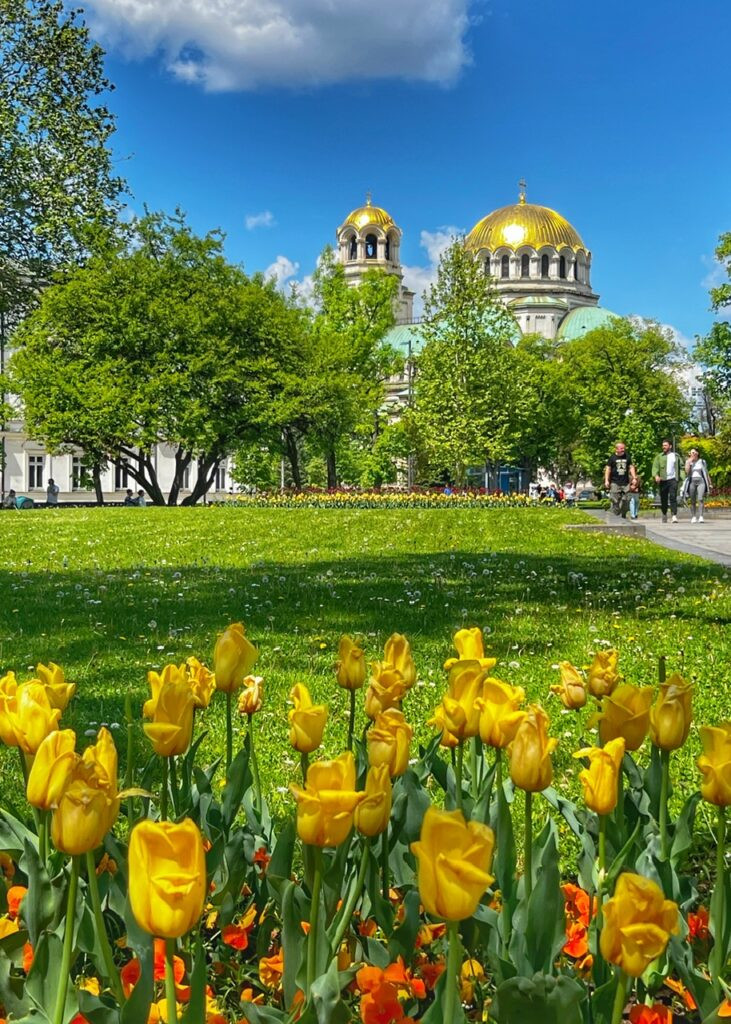
The green spaces, and accompanying pops of spring, were prevalent throughout the city’s center.
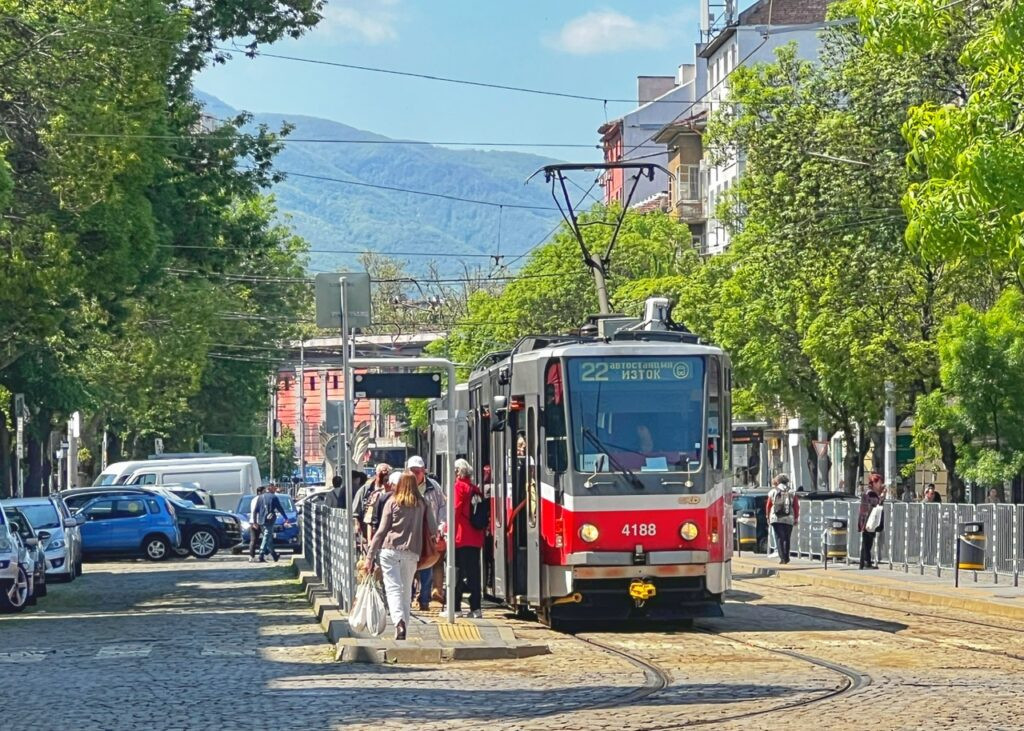
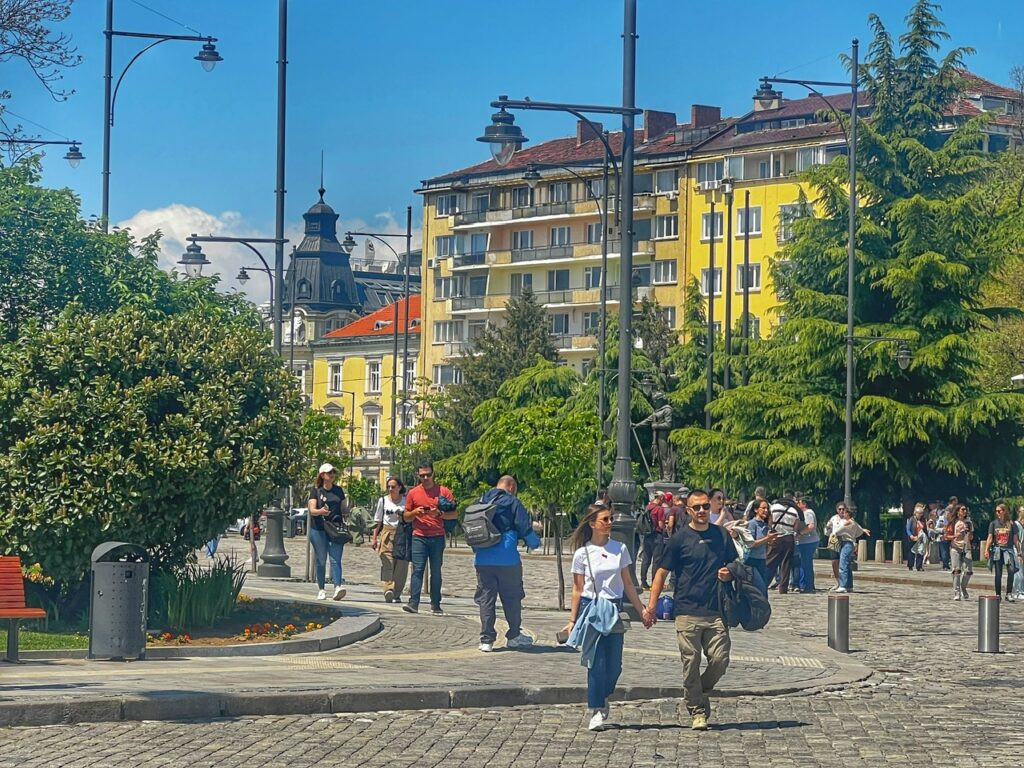
Also, prevalent were little reminders of our “home” in Prague, down to the exact make, color and line number of trams. This alone made us so happy. Oh it felt so good to be back in Europe. And even though it was a holiday weekend in May, it felt far from overloaded with tourists.
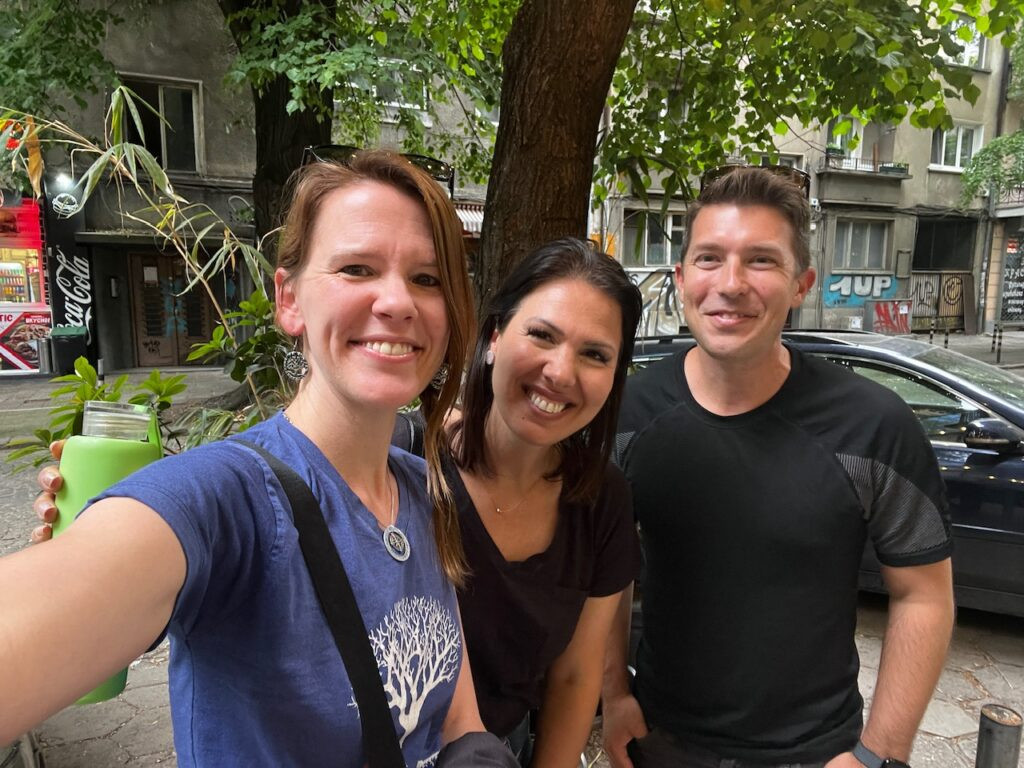
Meeting up for coffee with Bulgarian friend, Monika, who we quite randomly met in an Aqaba, Jordan honey shop in 2019.
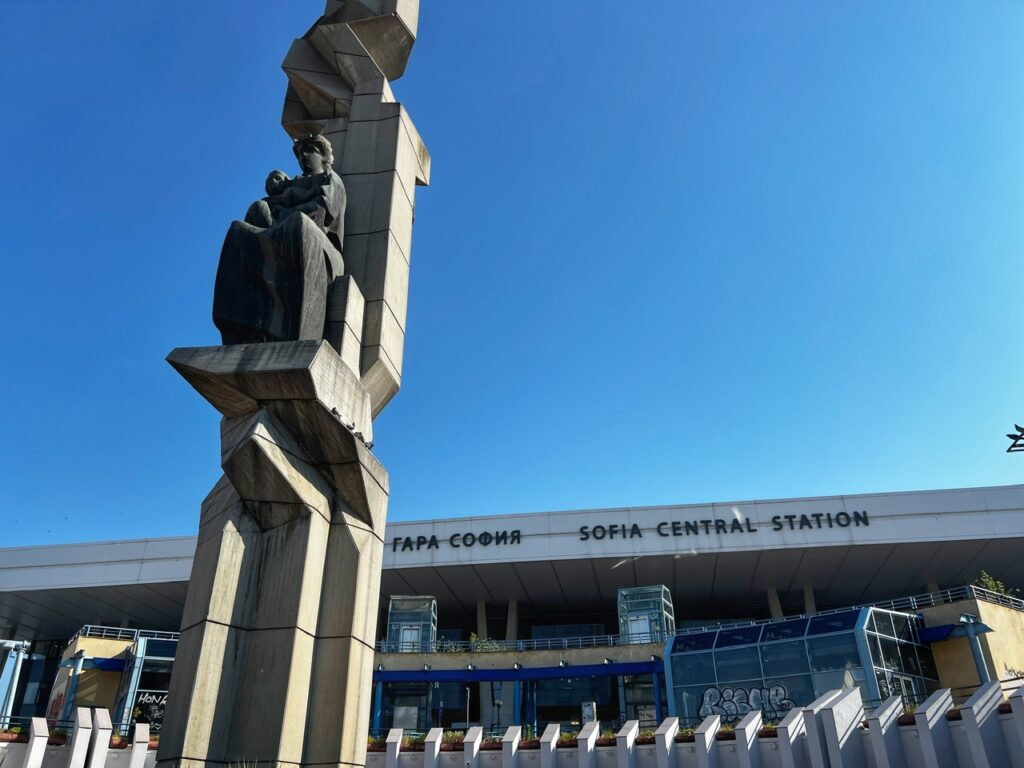
Stopping by the blocky communist Central Railway Station, we immediately went to the ticket machines to research train tickets to our next destination. When the machine blasted an error after three configurations, we looked around for an information desk and naturally, during those moments of perplexity, we found ourselves being summoned by a friendly “helper” who was clearly seeking tourist bait. He then spent 10 minutes whisking us to the bus station to buy our “much faster” tickets and then demanded a 5 Leva tip, getting angry when we only had 3. (3 leva is still $1.75 so it’s not like we were offering pennies.) Ok, next time we figure it out on our own…Regardless we got to practice our Bulgarian, included the eventual exasperated phrase of “sorry! we don’t have!”
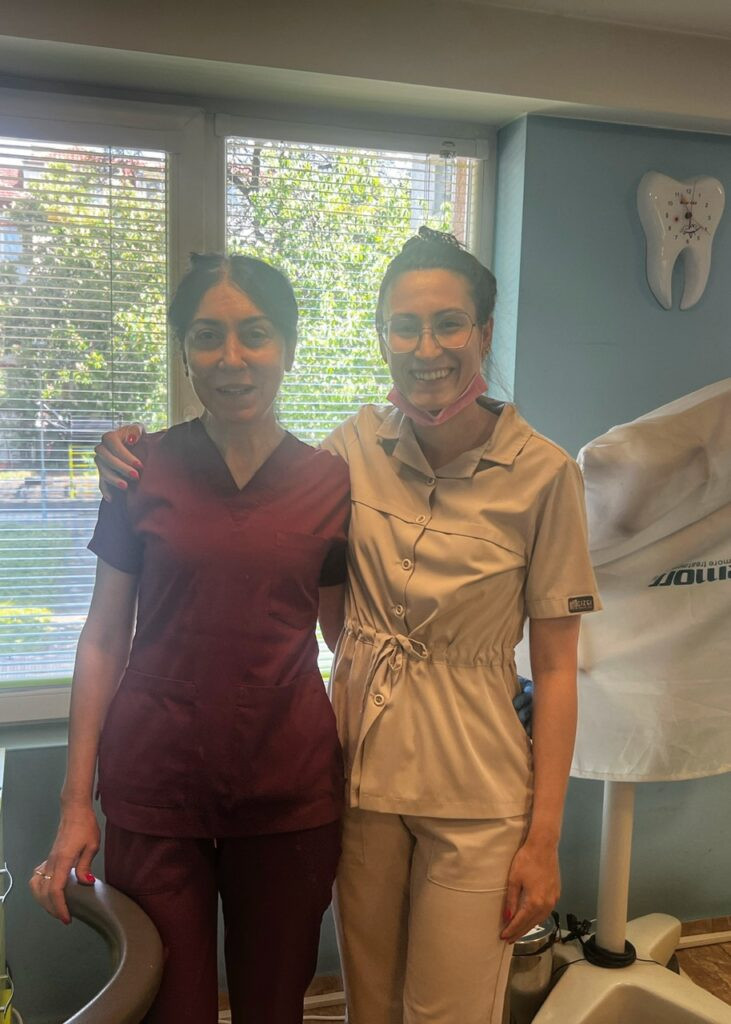
For our first Bulgarian visit to the zuhbo leker, aka tooth doctor, we went to Vedra Dental which, as we mentioned is all holistic. This means they don’t use icky chemicals inside your mouth. We’ve wanted to try this for awhile, and we’re pleased with the natural tasting cleaning process, modern equipment, as well as the phenomenal and perfectly English-speaking dentist. It cost $75 each for a cavity check and cleaning which is more than we usually pay. Perhaps natural things cost more? All in all, not sure it was worth it…🤣
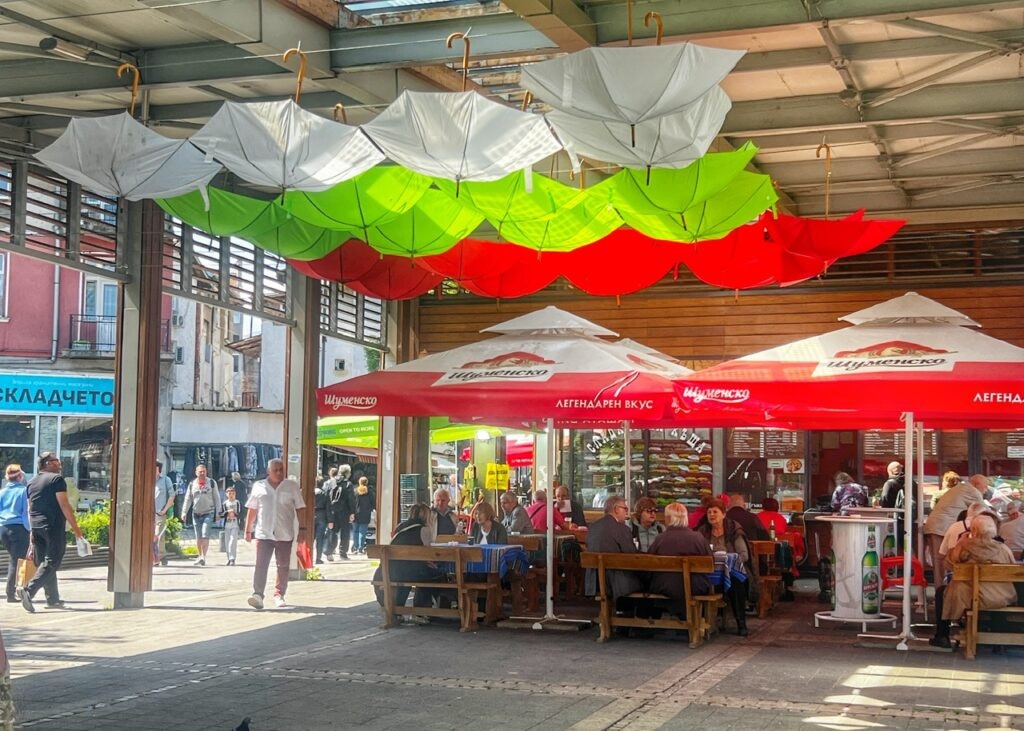
After happy tooth reports, we headed to the Women’s Market, which has a rich history dating back to its establishment in the early 20th century. It was originally a small open-air market where women sold homemade goods, but gradually grew into an active hub for female-only entrepreneurs to express creativity and empowerment.
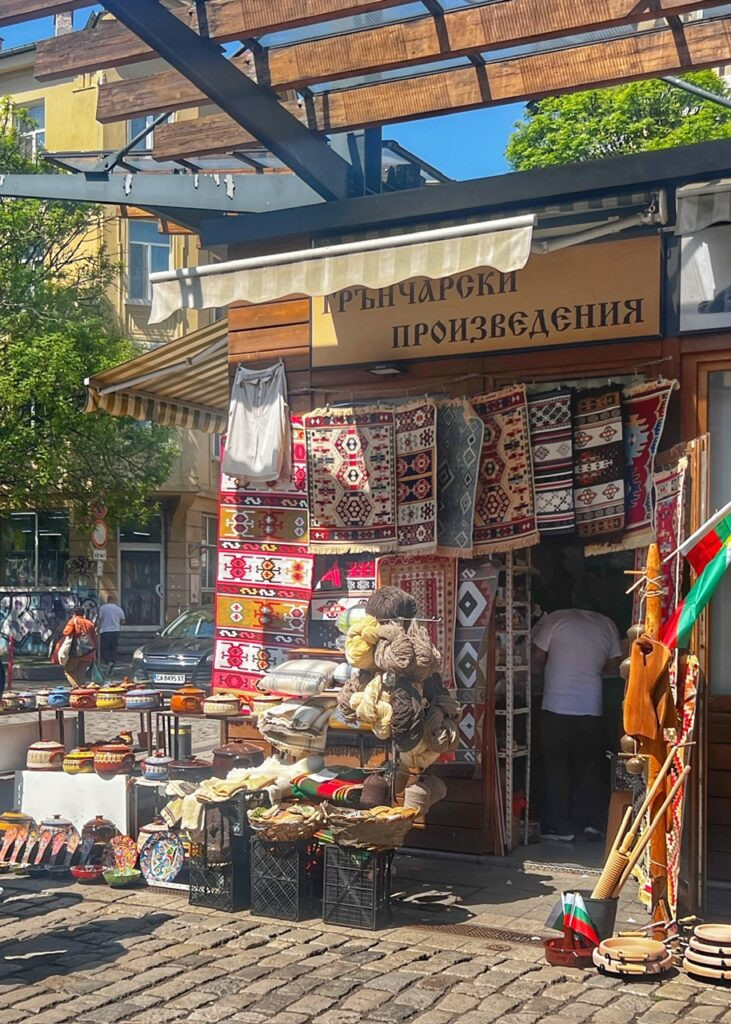
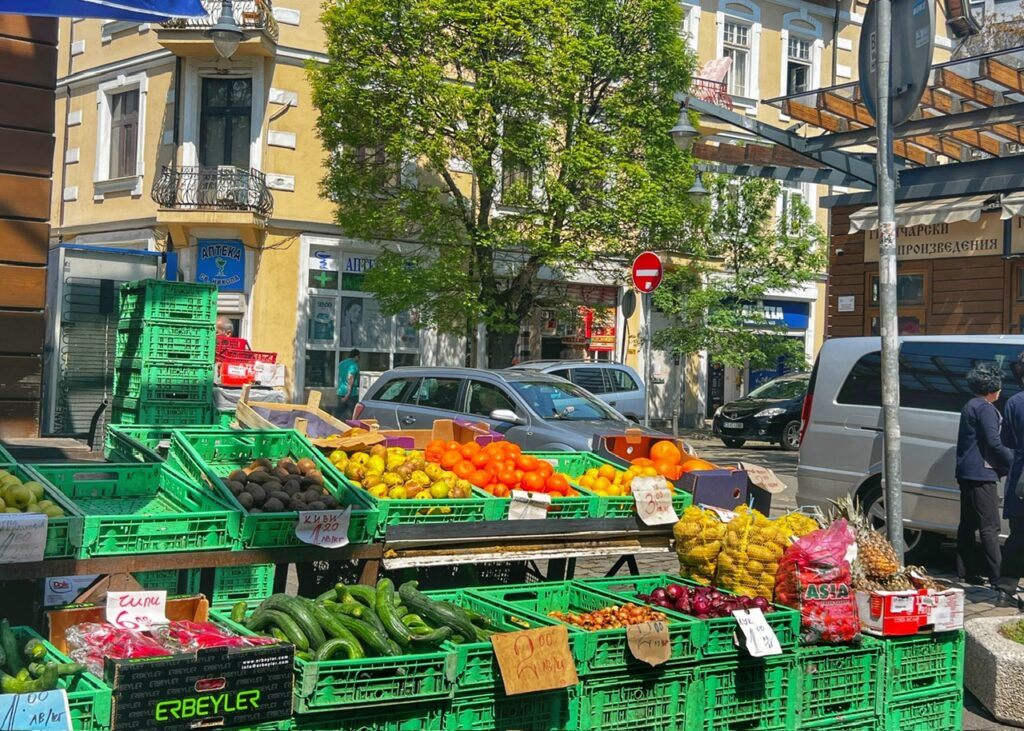
That in itself is pretty cool! And we were already drooling over the Bulgarian decor…Of course they also sell lots of fresh zelenchutsi (veggies!!)
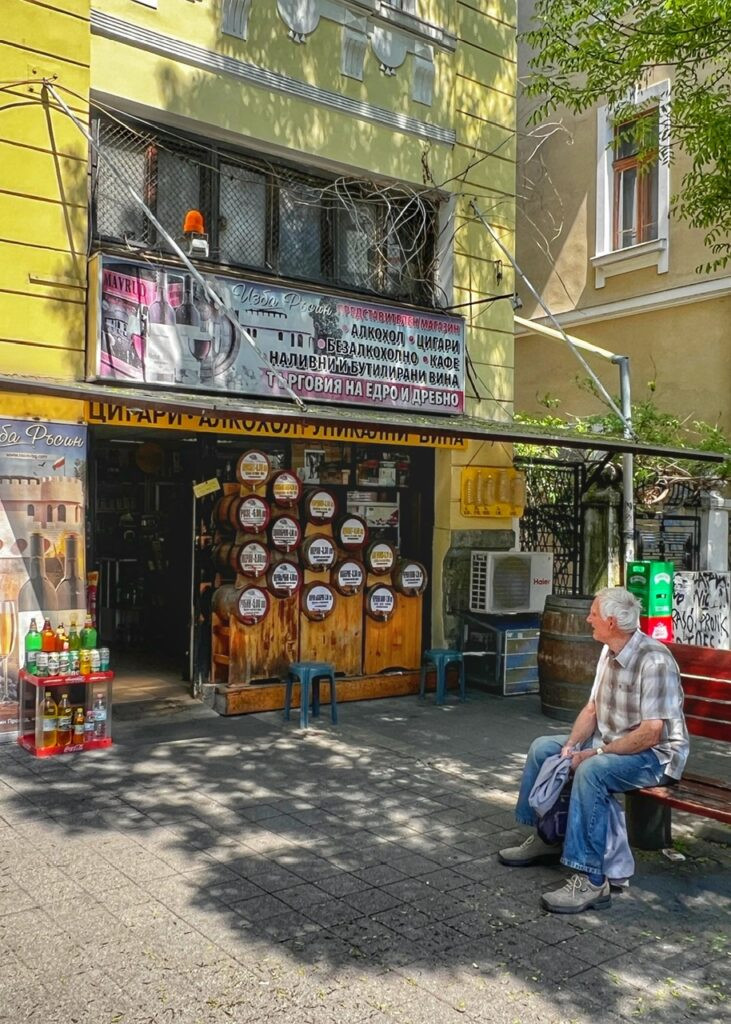
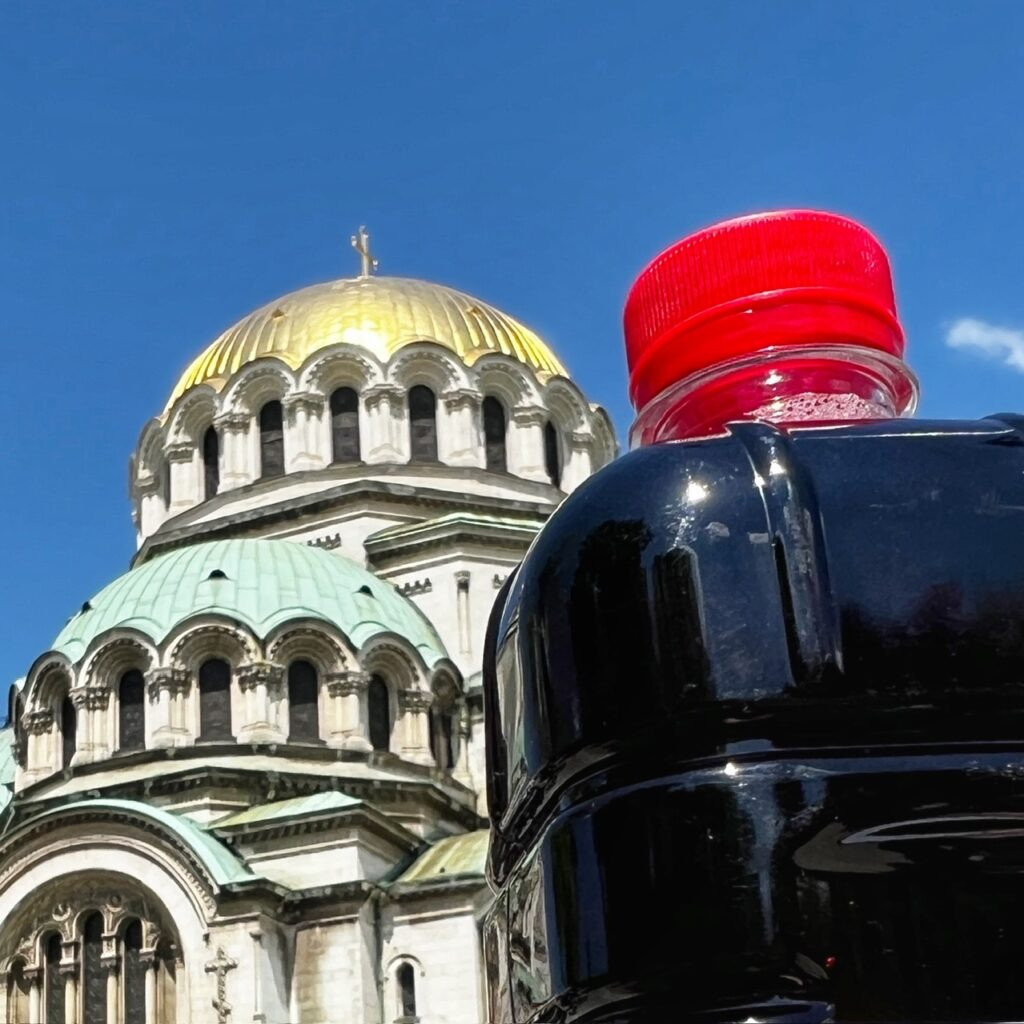
We were also very happy to see our first wine cask shop…something we looked endlessly for elsewhere in Bulgaria. Here we would fill a liter bottle with Merlot for $2.89 and later, classily enjoy a few sips near the cathedral.
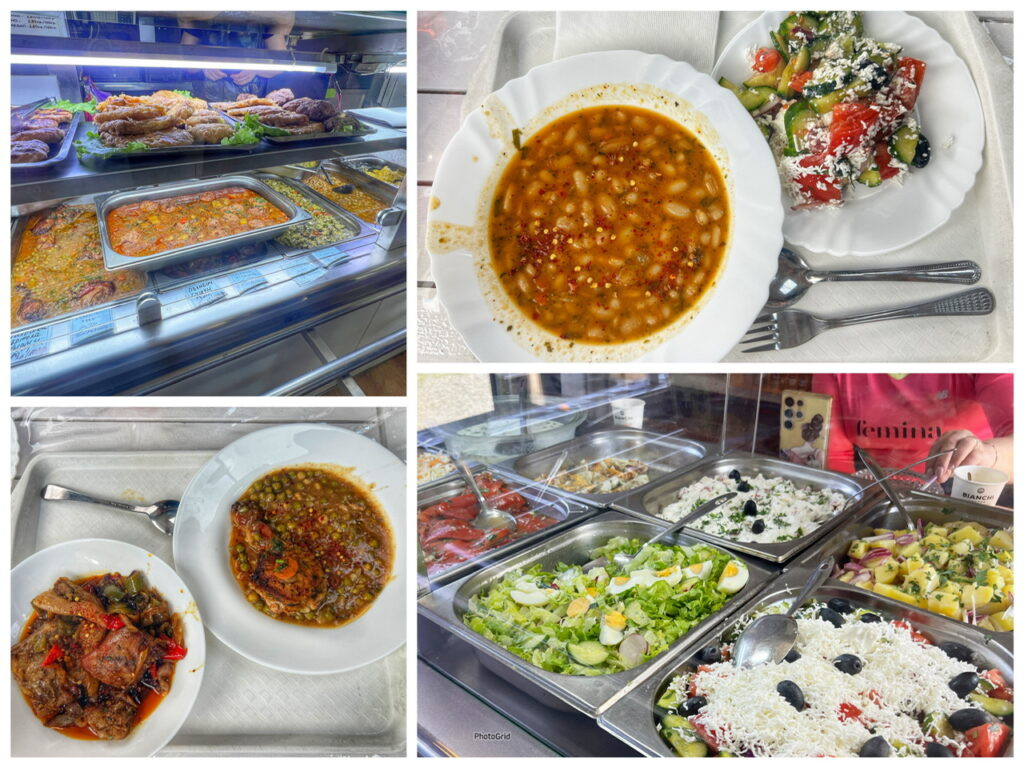
It was time to eat lunch, so we wandered into a buffet-style restaurant which look a lot like the lekarnas in Turkiye. However, as we dropped $18 on two salads, bean soup and two entrees, we quickly realized the prices were far from 2022 Turkish, OR our last visit to Bulgaria. Granted, we were in the center, in a somewhat touristed area so hopefully overpriced! That said, it was super tasty. 😋
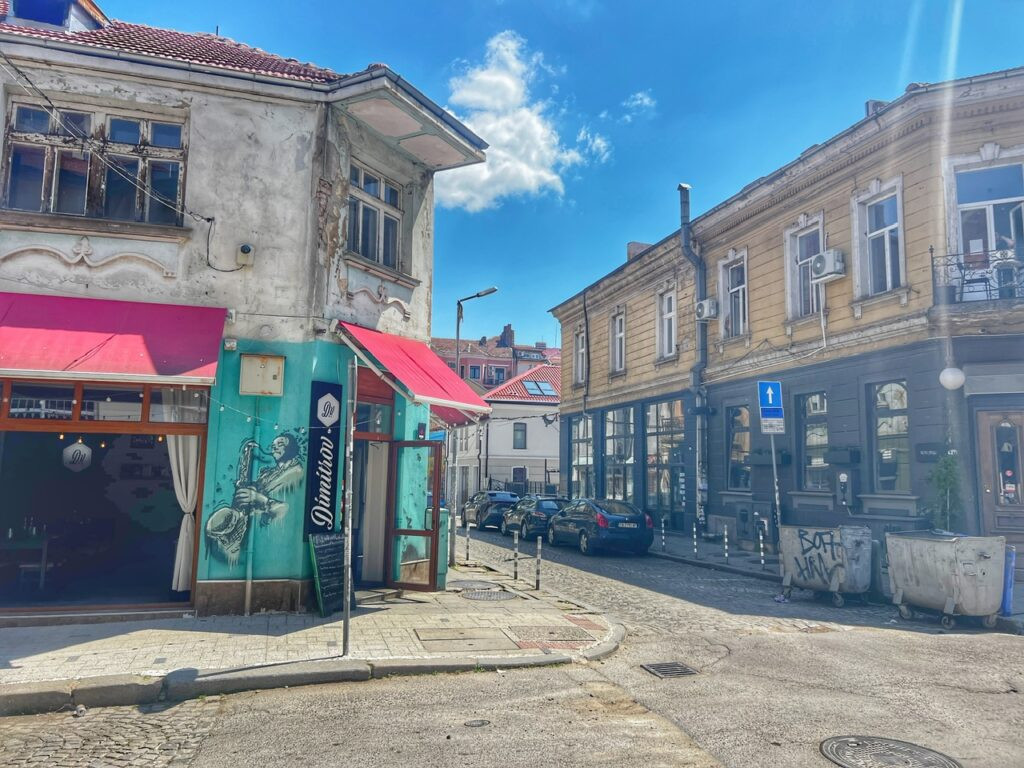
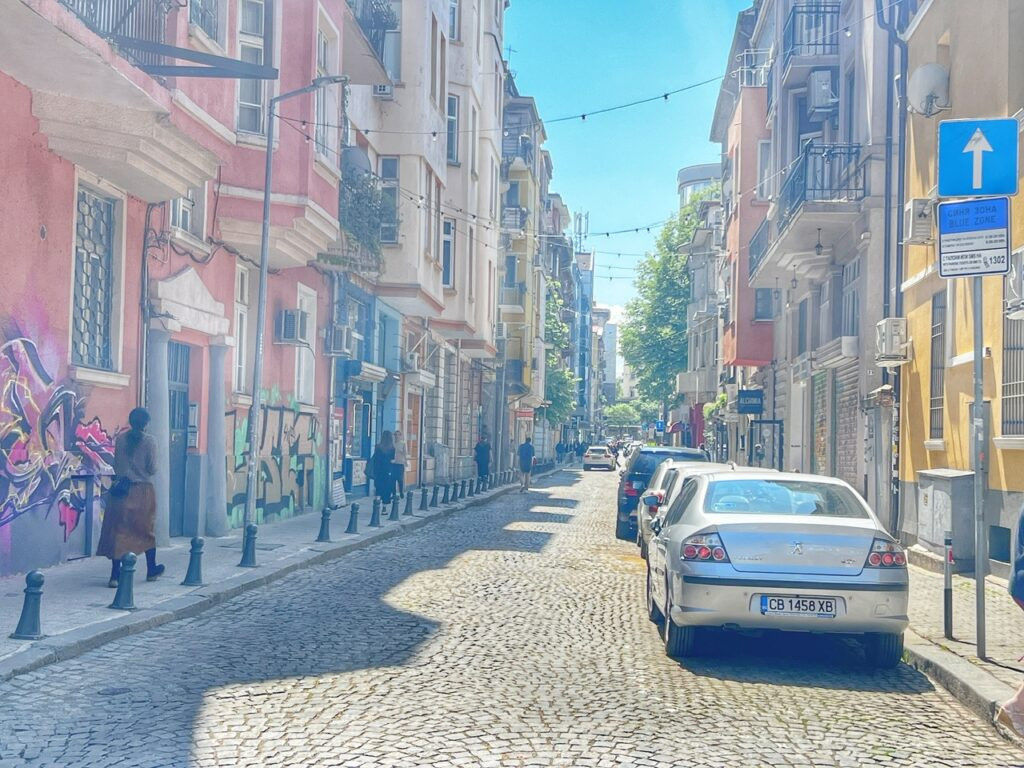
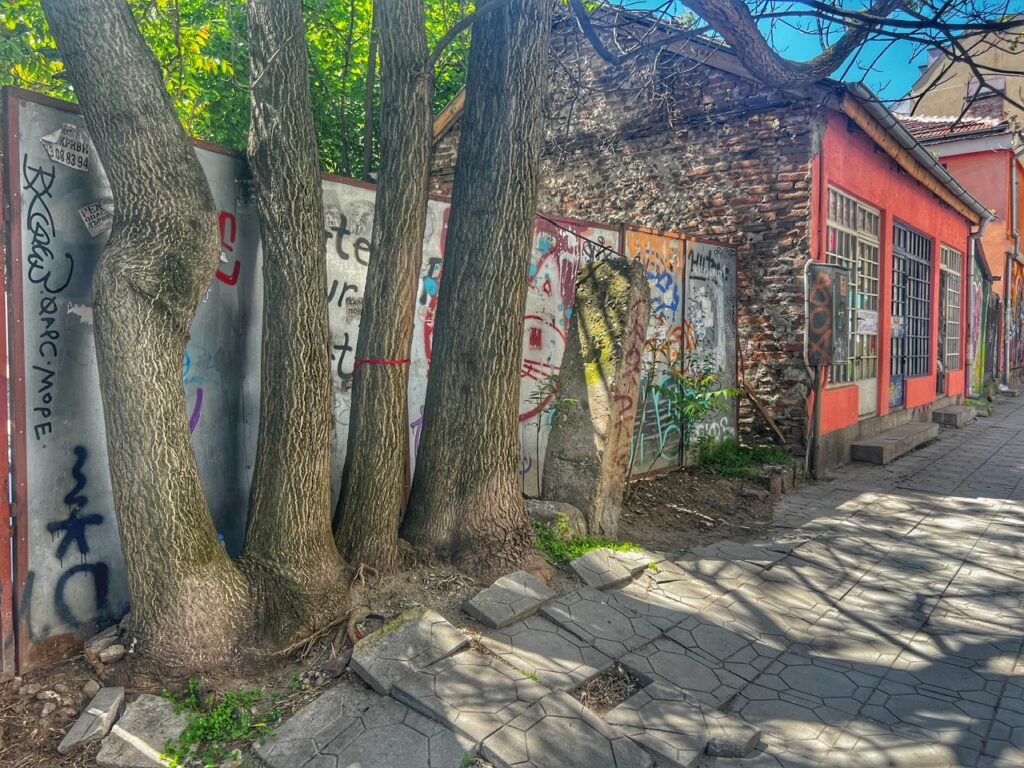
Roaming around the city center, there is plenty of Euro charm to be found, as well as some eccentricities like “The Hand,” which is clearly a creative arborist’s excuse not to whack down unnecessary trees.
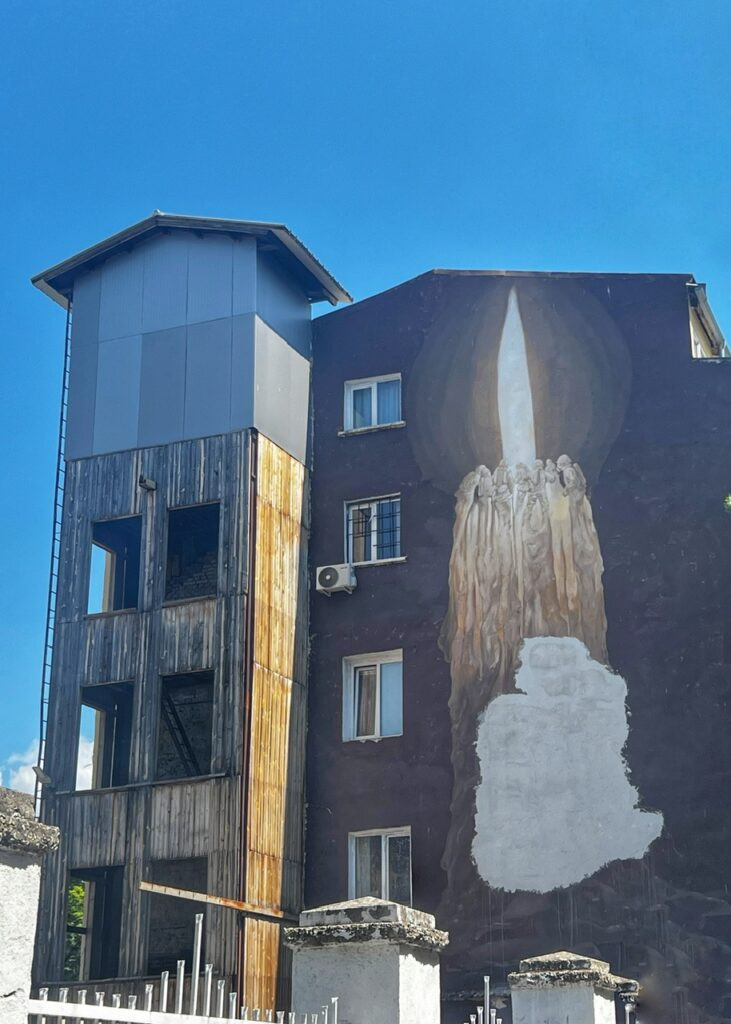
That certainly emits a flicker of hope for the world. The creatively named “Candle” street art is dedicated to the firefighters of Sofia.
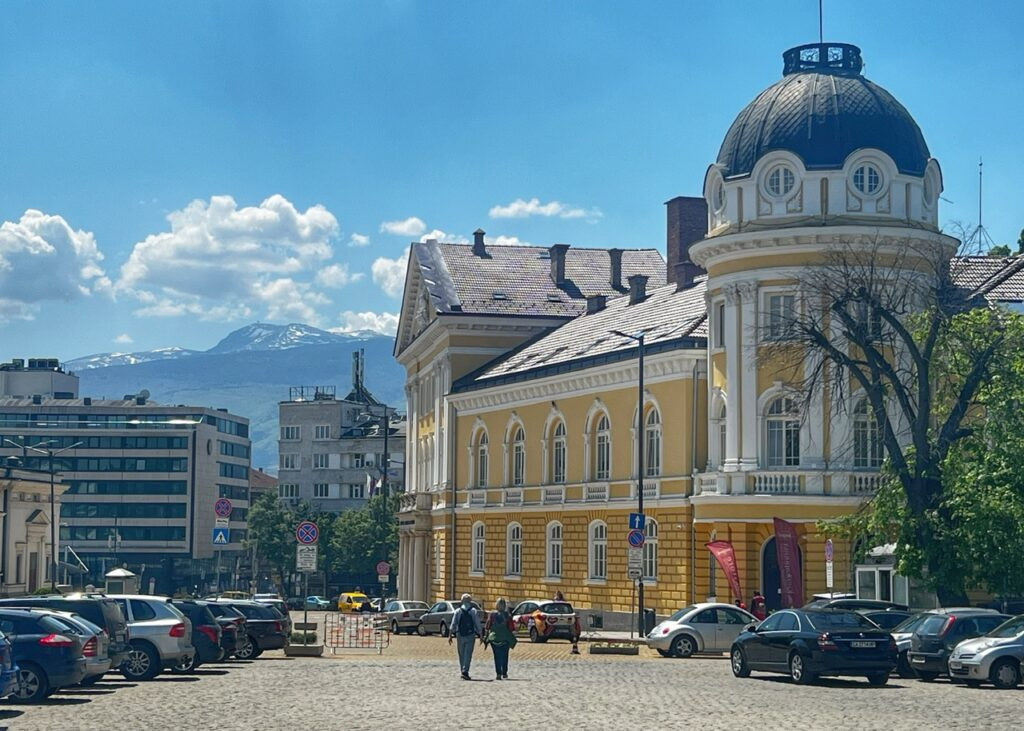
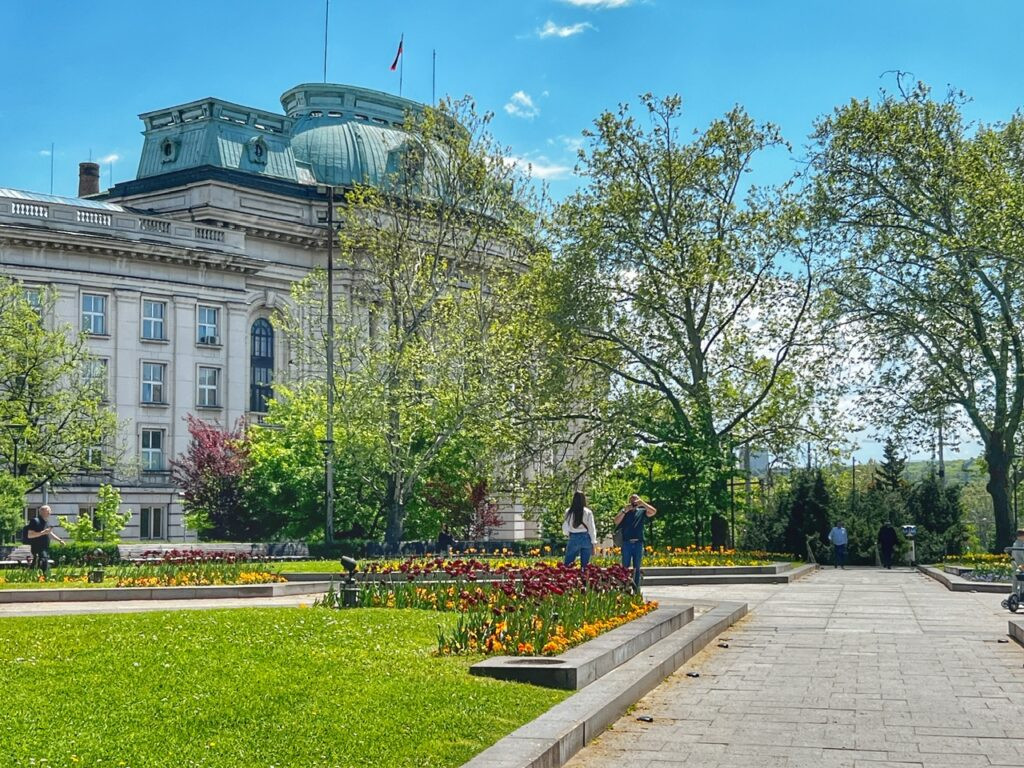
Near the main cathedral, we witnessed another beautiful sight…the snow-capped mountains. Ironically, we missed this view due to…falling snow…during November 2018. Like in many European capitals, gardens are dropped throughout the city, which included swaths of radiant tulips, seemingly ripped artistically around their crowns.
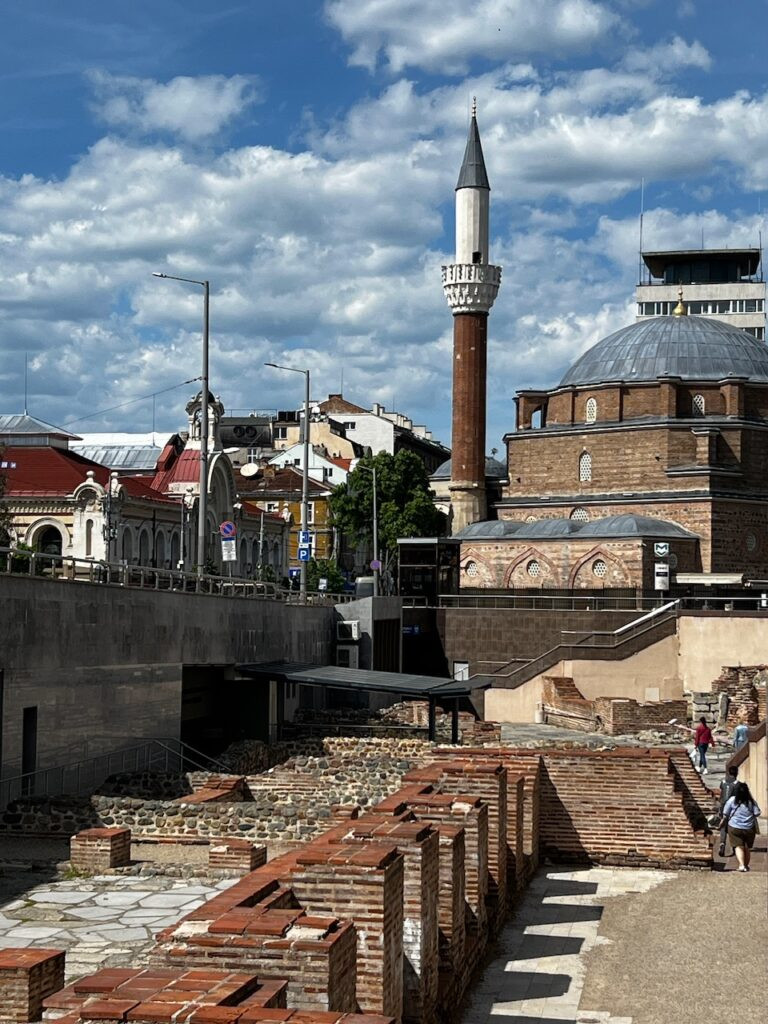
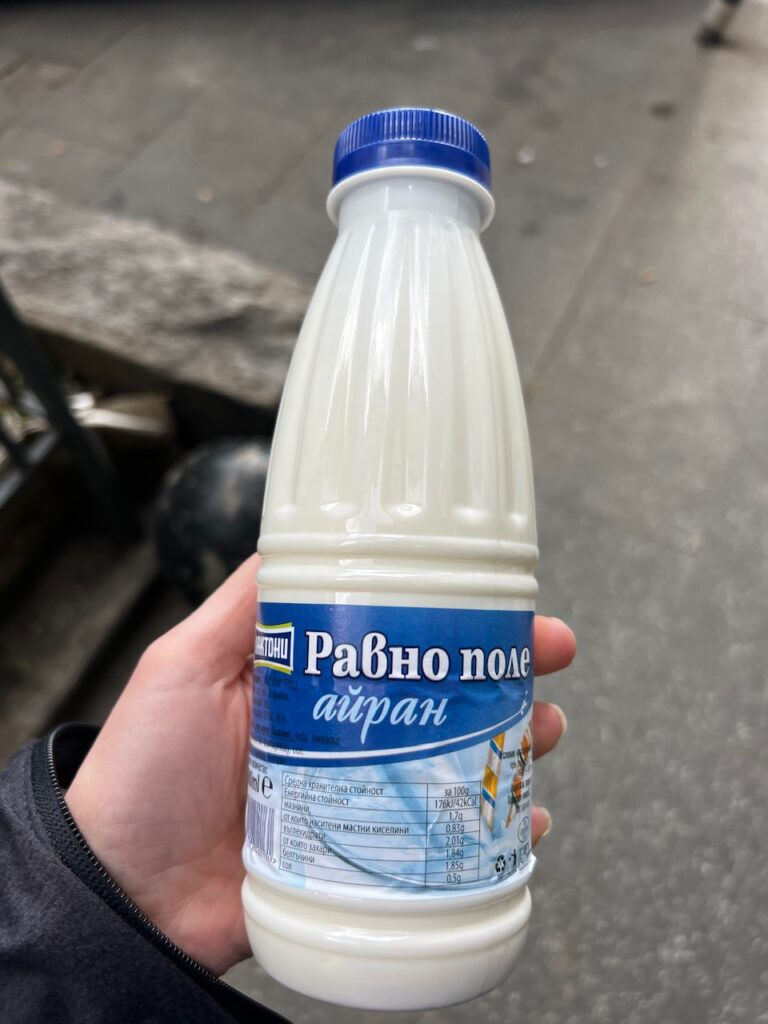
Walking into the Serdica metro station in Sofia is something very unique. Instead of the usual billboards and media onslaught, you walk into nearly 2000-year-old Roman ruins that were discovered only a few feet underground when excavating for the metro 60 years ago. The contrast between modern and ancient is fascinating.
Next to the Serdica Complex is the Banya Banshi Mosque completed in 1576 during the years the Ottomans had control of the city (which lasted five centuries!) Its name means “many baths” because it was actually built over natural thermal spas and you can even see the steam rising from vents near the mosque walls.
Also, nearby, we grabbed some ayran, a treat we’ve been missing for three years. Ayran is a savory and salty yogurt drink that we became addicted to during our first foray to this part of the world. A bottle costs about $.90.
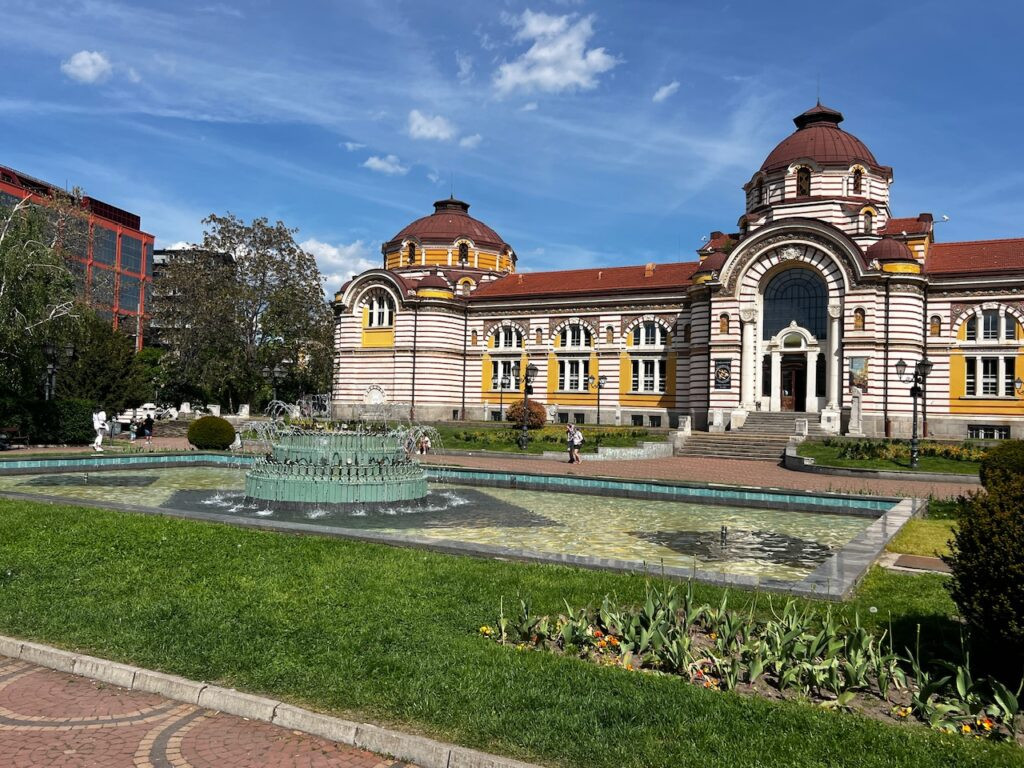
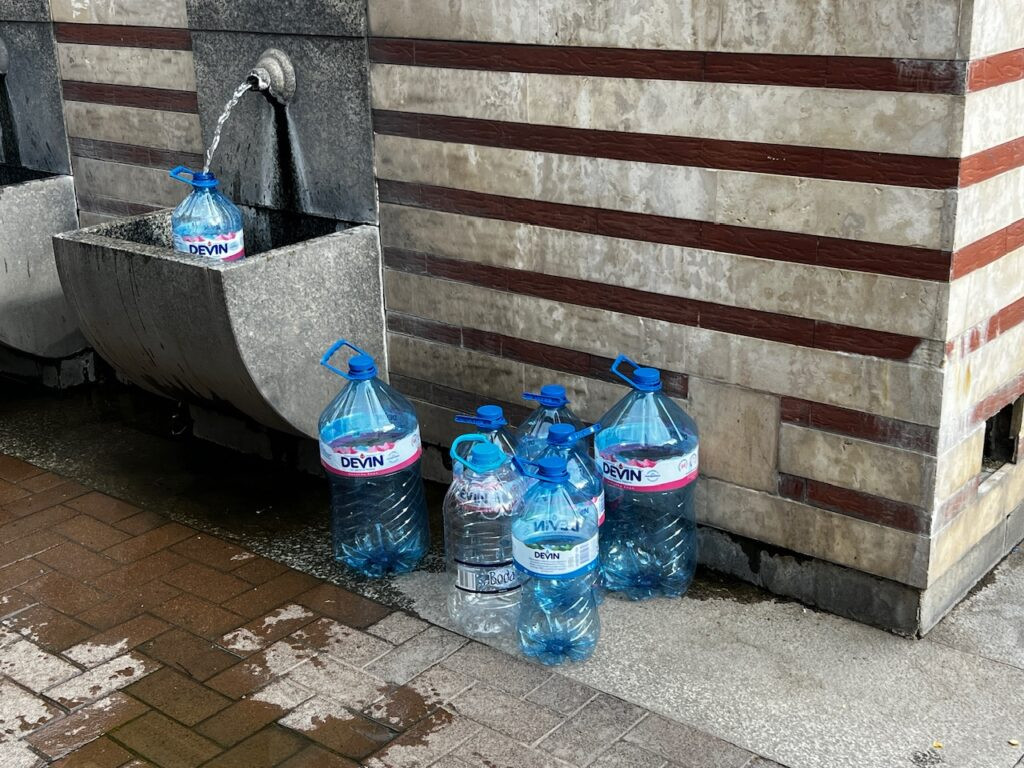
The first public baths using the hot mineral spring in the centre of Sofia date back to the period of Roman presence. The more modern (and likely hygienic) rendition opened in 1913 and today houses the history museum.
Or, if you’re rather in the market for free…Locals filling up their water bottles at the community water stations.
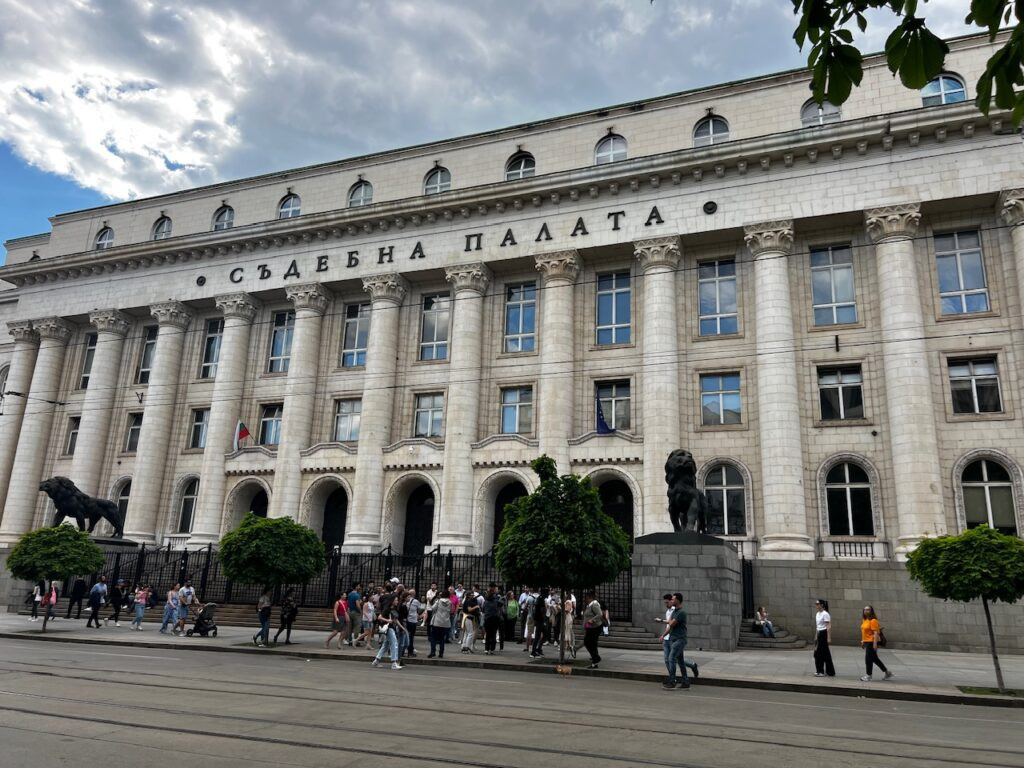
The national courthouse which was constructed in the late 1940s in neoclassical style.
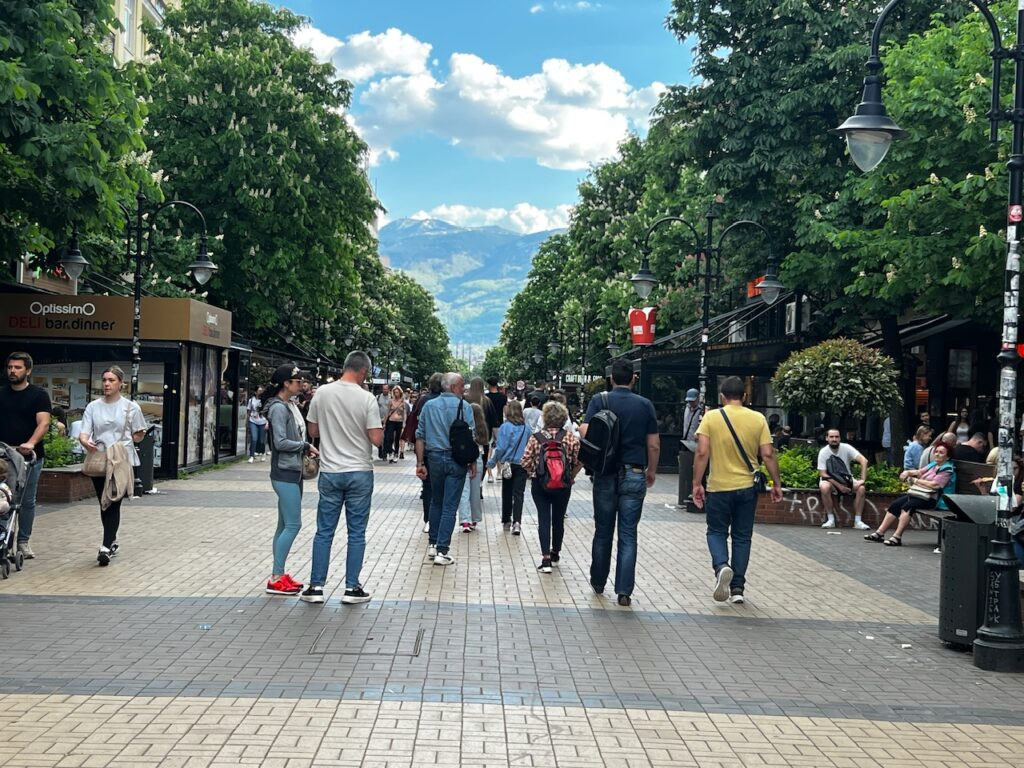
A lush and notable pedestrian avenue through the center. This is one thing we love the most about being in the Balkan countries.
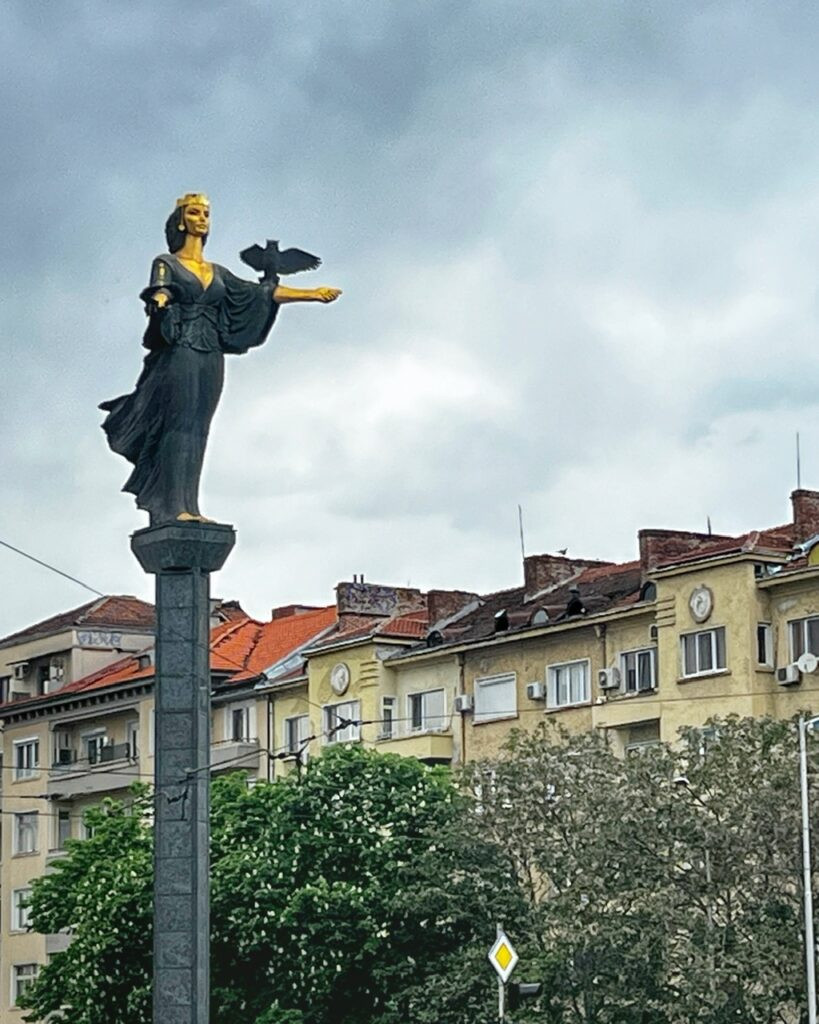
The commanding Monument of Saint Sofia replaced the Lenin statue after the collapse of communism.
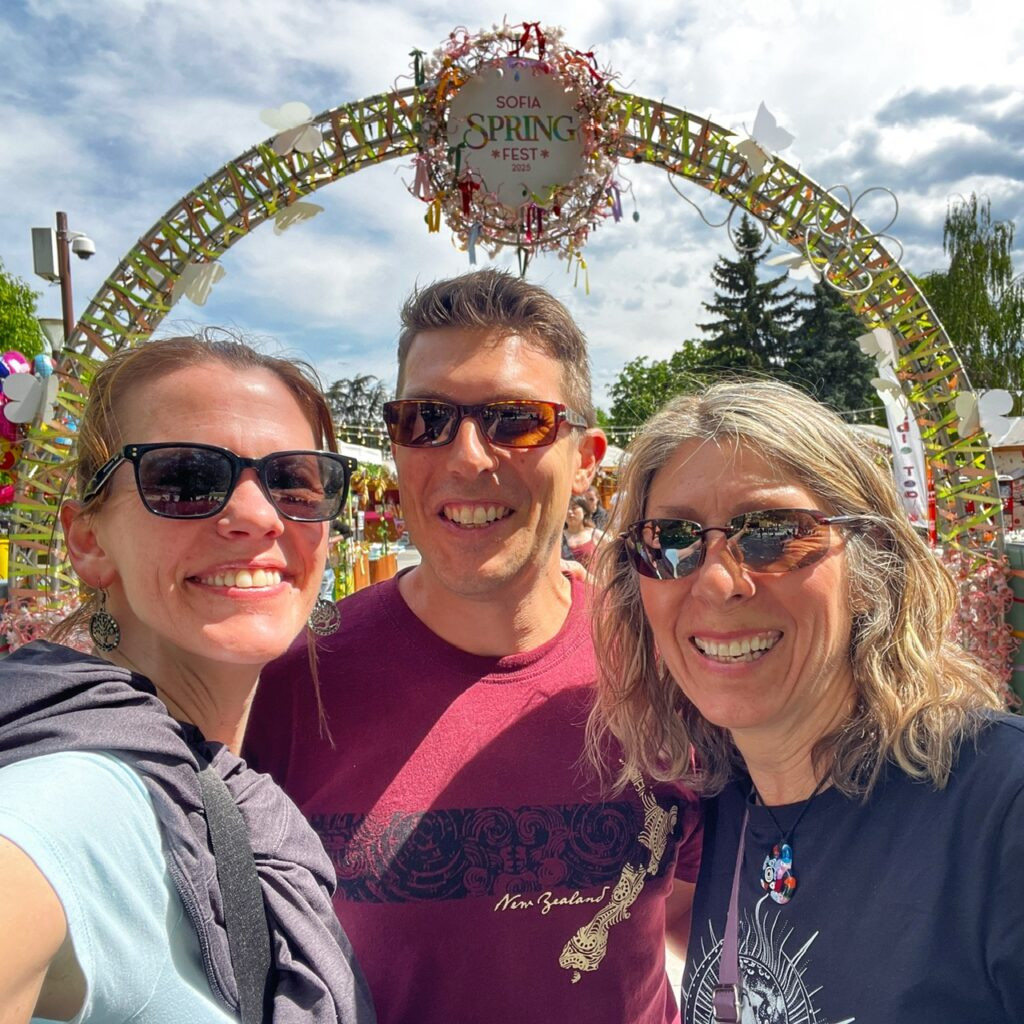
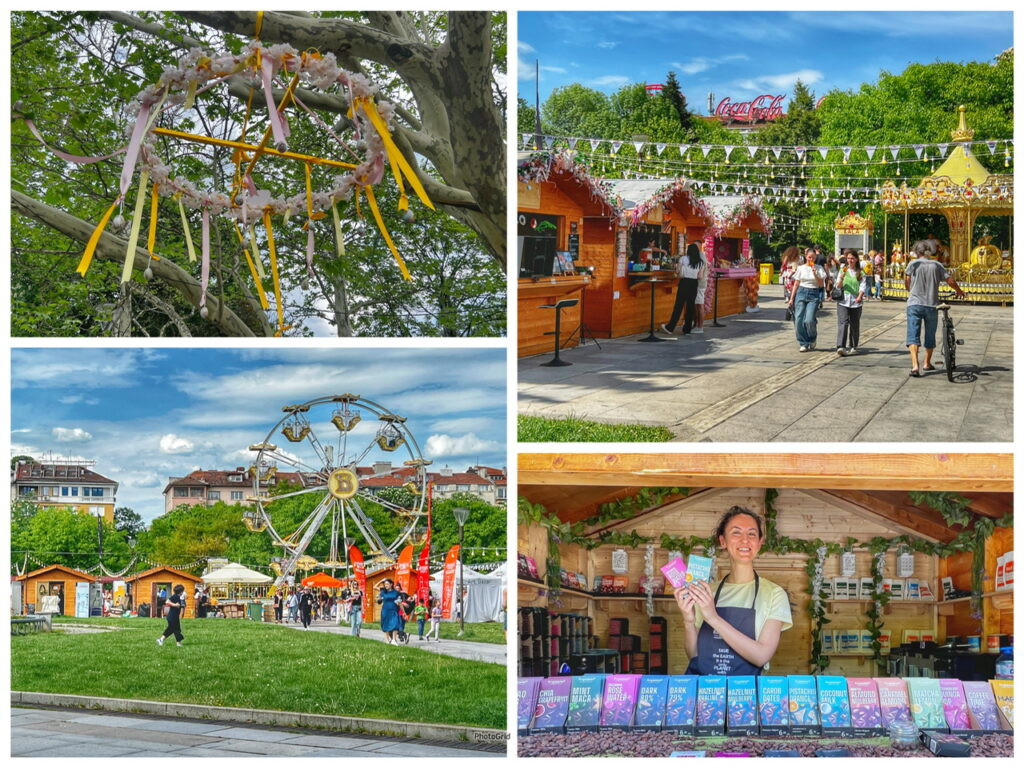
Meeting up with another American travel friend Renee, who we met while hiking the Himalayas in 2019 and haven’t seen since. It was so wonderful to chat about our favorite topics (finance and travel of course) with someone who can relate, all while wandering through Sofia’s Springfest.

